 EDITOR IN CHIEF & DESIGNER ----- NICOLE STEELE
EDITOR IN CHIEF & DESIGNER ----- NICOLE STEELE


 EDITOR IN CHIEF & DESIGNER ----- NICOLE STEELE
EDITOR IN CHIEF & DESIGNER ----- NICOLE STEELE

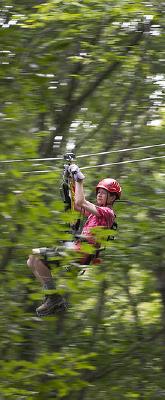
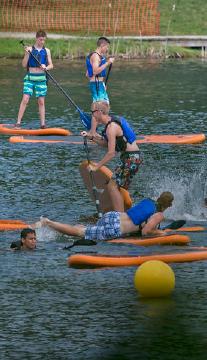
Over the past year, something that I’ve frequently refected upon has been Venturing’s third portion of the ALPS model: Personal Growth. Personal growth is certainly not easy, but it is essential to success in every aspect of your life. I’m a frm believer in lifelong learning as it allows us to expand our horizon of interests and capabilities as well as keeps us humble. Venturing has pushed me to grow more than anything else in my life, and the results of it are already apparent. For instance, I would not consider myself a graphic designer by nature, but I have learned a great deal while designing the newsletter you are currently reading. Additionally, outside of Venturing, I serve as the Public Relations Student Society of America’s National Vice President of Brand Engagement. In that position, I get to lead a subcommittee (similar to the way Crew and VOA leaders learns to stay organized and lead a group of people), write and edit blog posts (something I’ve gotten used to through working on newsletters), record podcasts (which I can confdently do after learning how to talk with Advisors and interview people for newsletter articles), and more.
Similar to me, many past Venturers have seen Venturing positively infuence their careers. One of these people is Jeremy Felty, who was the frst ever Summit recipient and who shares his story on page 30. And to further contribute to Venturing nurturing your personal growth and success, we’ve also included an article on how to land an internship. This article talks about both universal tips for job applications as well as ways to translate your Scouting experience into resume language.
Beyond personal growth, there are many other reasons we love Venturing. I shared some of the reasons a few of my Scouting friends and I think Venturing is unique and important on page 8. If you have any other reasons you love Venturing, we’d love to hear! Share them with us on social media by tagging @VenturingBSA. Additionally, if you have any other stories you think would be a good ft for our newsletter, we would love to talk to you! Reach out to us by clicking here for our brand new newsletter connect form!

Yours in Venturing, Nicole Steele

The History of the Summit Rank - 5 Jamboree 2023 - 7

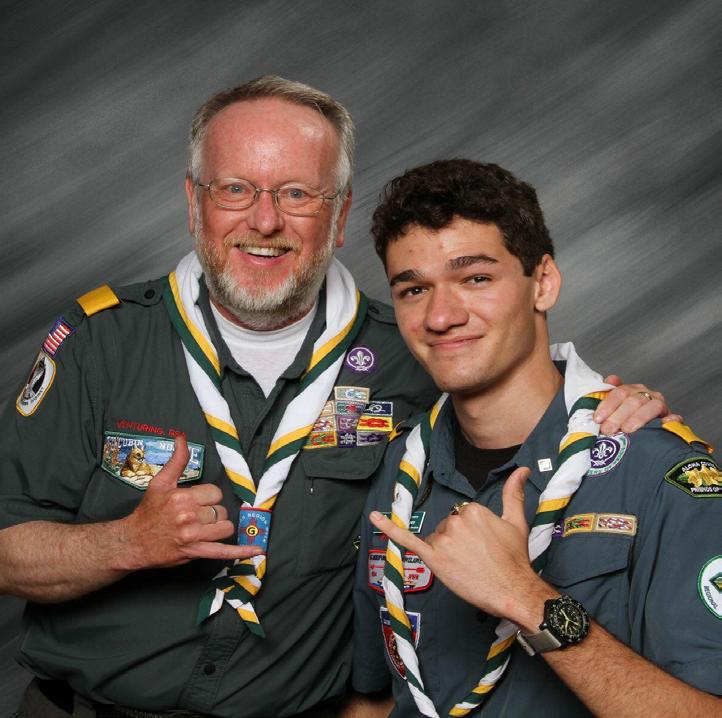
Why I Love Venturing - 8
Getting to Know Your National VOA - 12 You Asked, We Answered - 15 The National VLA Recipients - 16

Council Standard of Venturing Excellence - 21 How to Land an Internship - 22
An Advisor’s Advice: David Wilson - 26
The First Summit Recipient: Jeremy Felty - 30
Calendar - 34
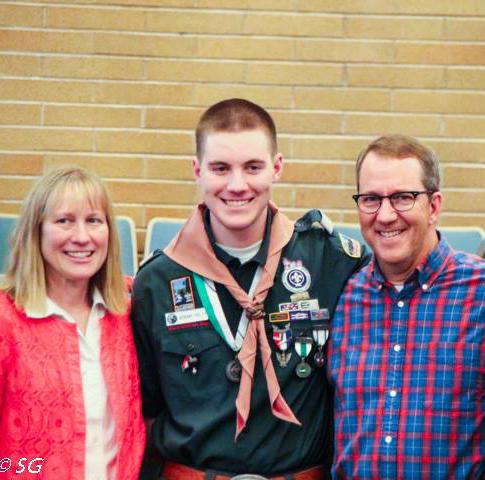

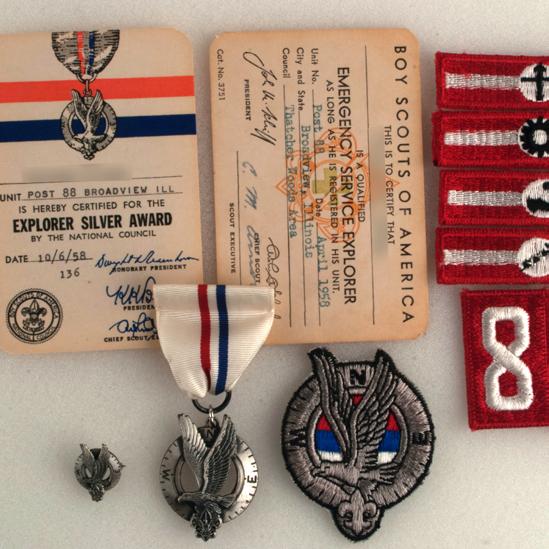




Over the years, the Summit Rank has taken many shapes and forms, but one thing still remains: the prestige given to everyone who has completed the award’s requirements. Today, we are going to re ect upon the history of Venturing’s highest honor to see how it has changed over the years.
Advancement has been an important part of the Boy Scouts of America since the issuance of the rst 12 merit badges in 1911. After several years of experimentation in the west --- mainly in Utah, Washington, and Oregon --- the Explorer Scouts program was approved by the National Committee in 1933 and became part of the Senior Scout program in 1935. Explorer Scouts rst existed solely within Boy Scout Troops as patrols. At rst, Explorer Scout units were called Troops, but around the year 1944, the term “Post” was coined as the term for Explorer Scout units.
When the BSA introduced the Explorer program in September of 1949, the new advancement program for older Boy Scouts was also released. This program had the ranks of Apprentice, Bronze, Gold,
and Silver. Advancement through the ranks was done by earning one of several Rating Strips, which Explorer could do by participating in an outdoor event, social event, and service event, as well as several speci c requirements for that Rating Strip.
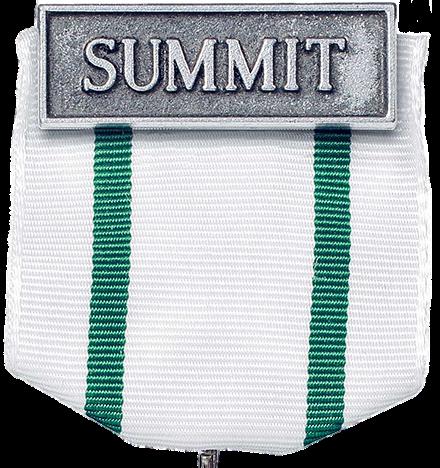
In 1954, another redesign of the Silver Award Medal was implemented. The updated Silver Award Medal had a white ribbon with a ying eagle on a compass. The requirements for advancement generally remained the same, but the new look of the award had a signi cant in uence on the early Venturing Award program. There were 18,256 Silver Awards earned up until the end of 1966. At that point, the Explorer program went through another large program change and discontinued their old advancement program.


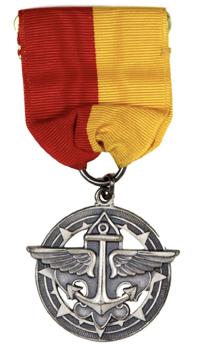



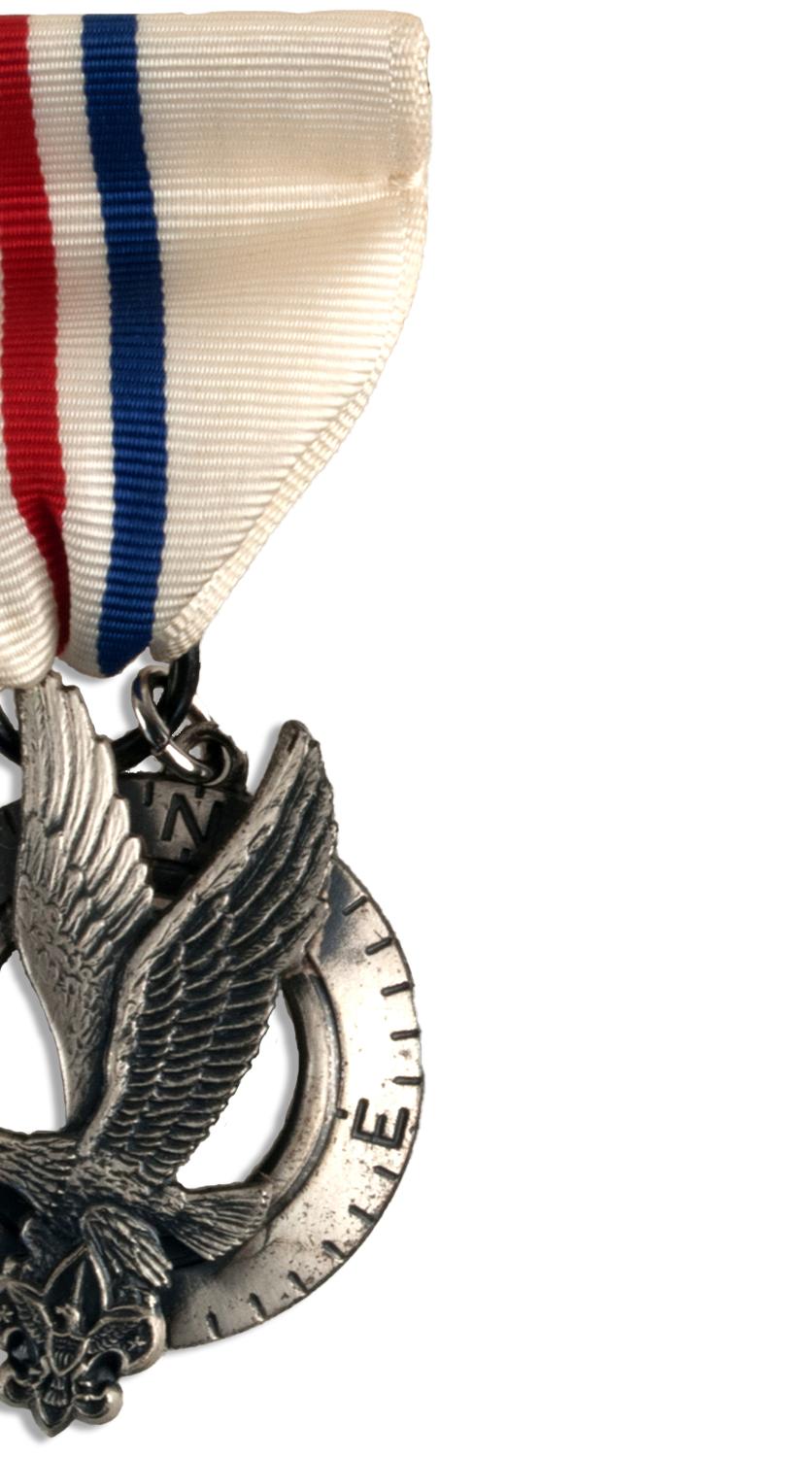
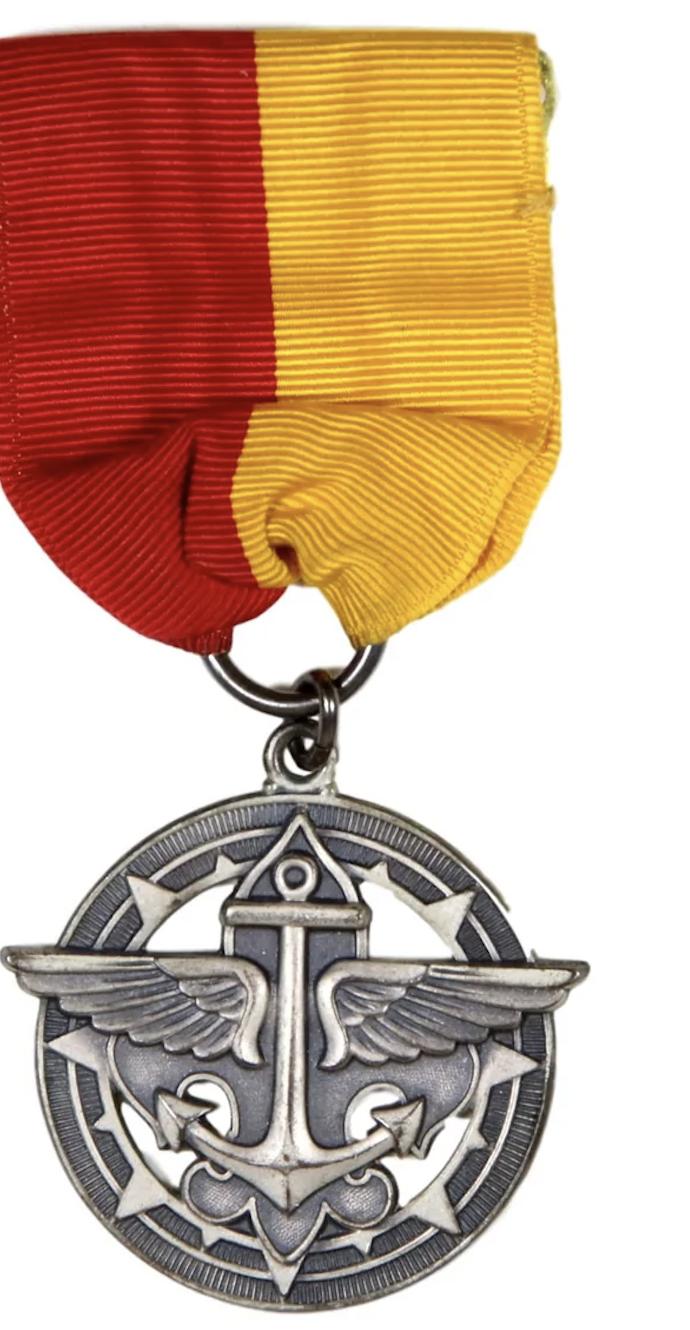
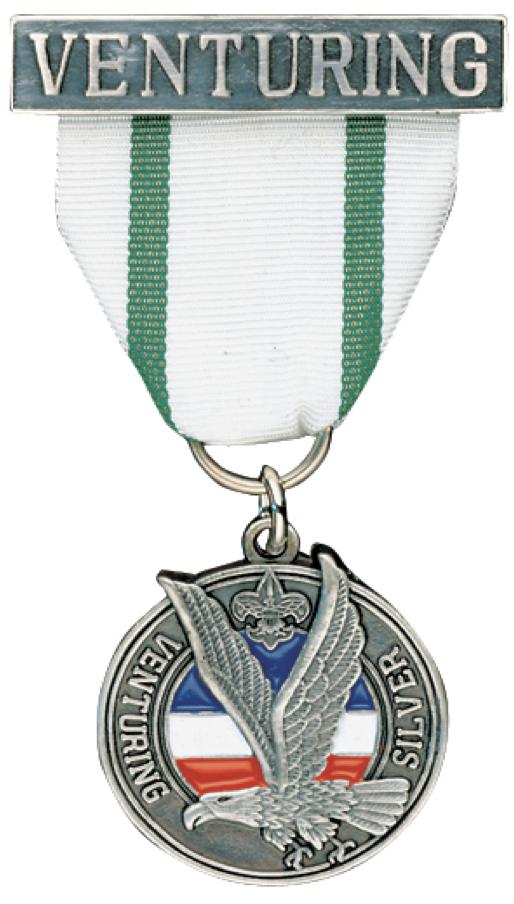



Fast forward to February 9th, 1998 when the Venturing program was born. Along with Venturing was the rebirth of the Silver Award. The Venturing Silver Award was inspired by the 1954 Explorer Silver Award as well as the Gold Award, and ve Bronze Awards (Arts and Hobbies, Outdoor,

Sea Scouts, Sports, and Religious Life). While the new Venturing Advancement program was similar to the 1949 Explorer Advancement program, it came with a tremendous amount of improvement.

In 2014, the Venturing program underwent a major overhaul. Along with the ALPS (Adventure, Leadership, Personal Growth, and Service) program model that was established, a new series of recognitions were introduced: Venturing Award, Discovery Award, Path nder Award, and Summit Award. The new award requirements include aspects of the ALPS model to help Venturers develop a wide array of skills and experiences. The award requirements that came along with this advancement update are the same requirements that you see in the Venturing Handbook today. The Summit Award medal includes the Venturing motto “Lead the Adventure,” but its design pays respect to its two more recent Silver Award medal predecessors.
Another major change came relatively recently. In 2019, the National Venturing Committee voted to rebrand the Venturing advancements from being called “awards” to “ranks.” The decision was made to keep Venturing’s advancement system consistent with other programs in the BSA. Still, all of Venturing’s requirements for the Summit Rank advancement system remain the same as the 2014 update.
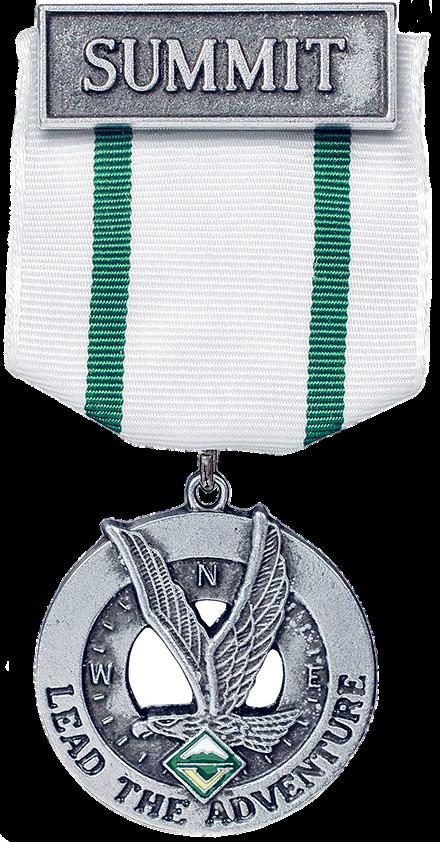

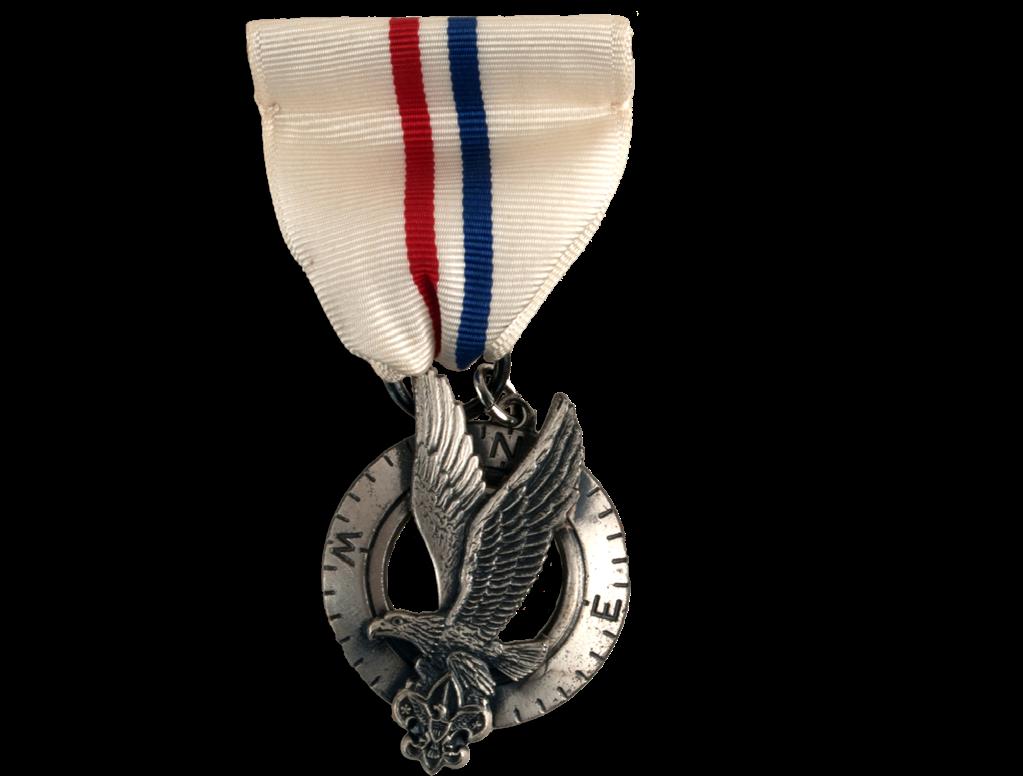
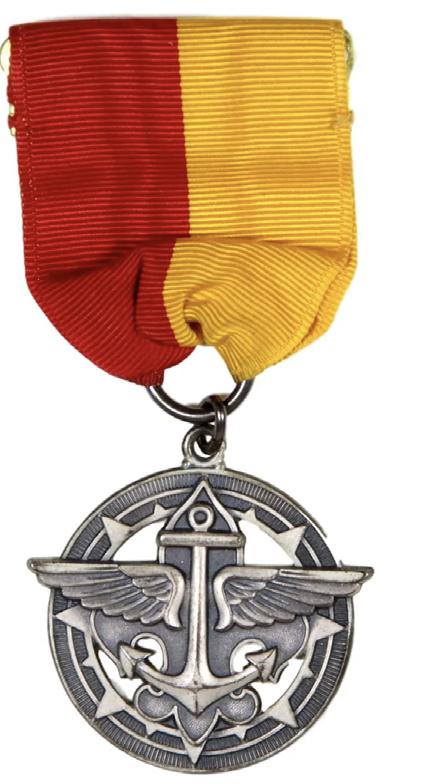
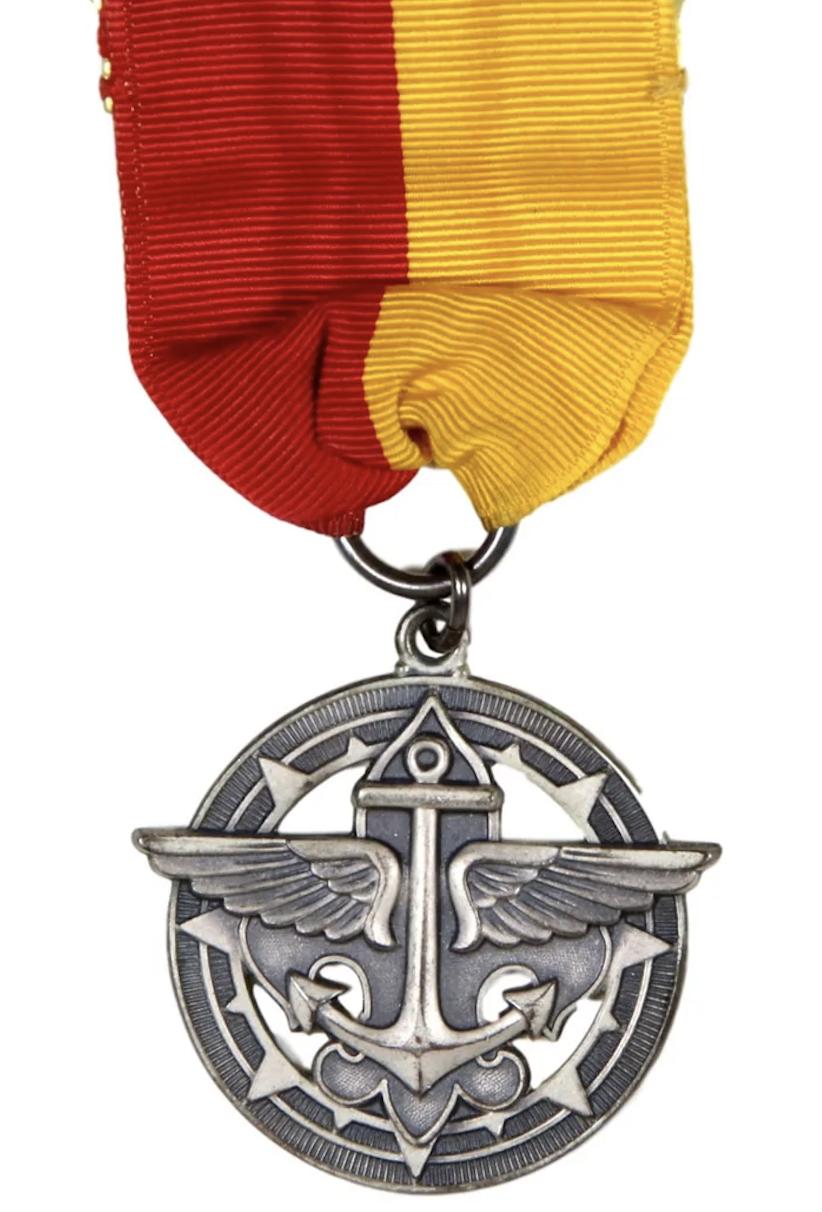
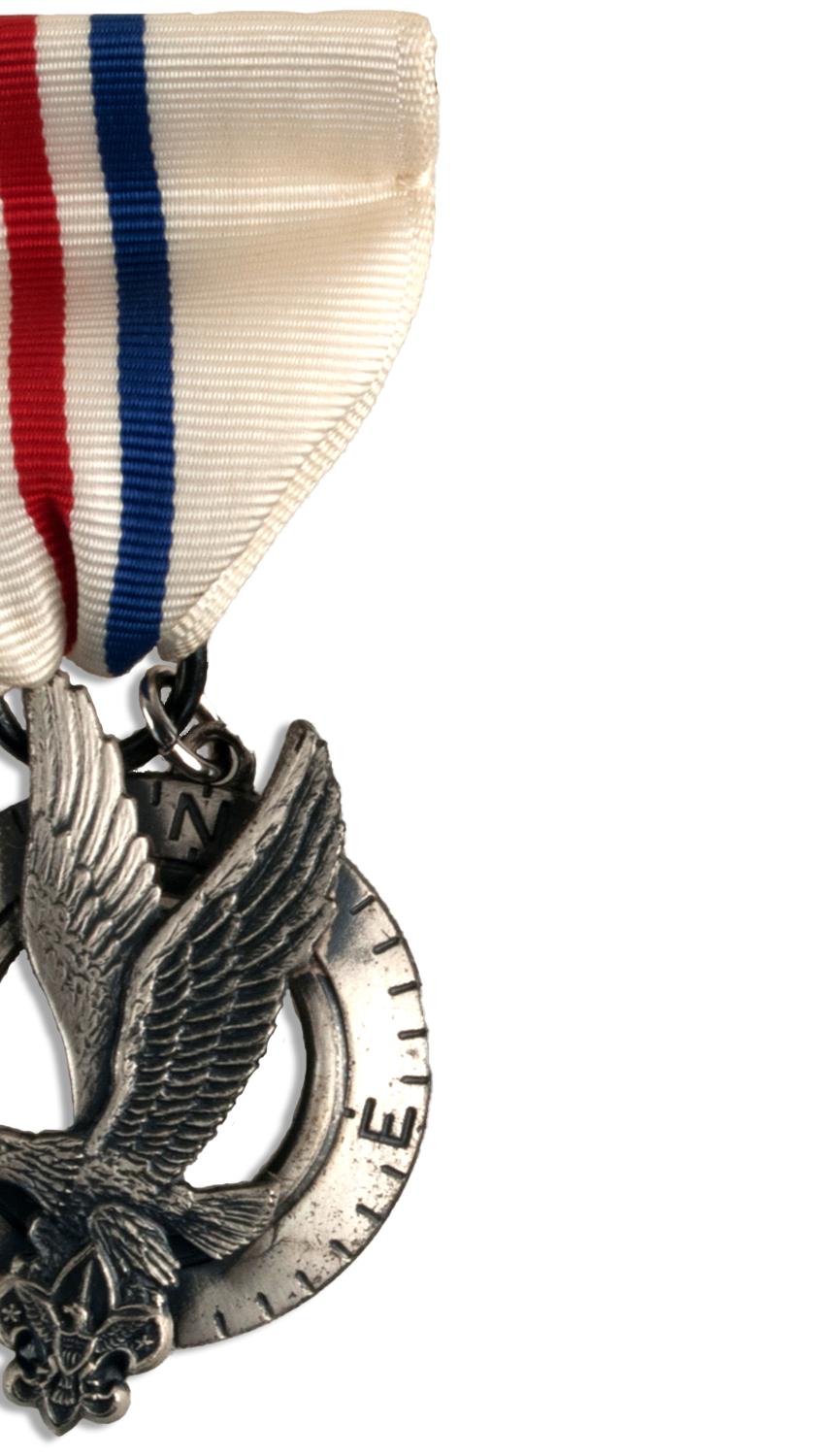




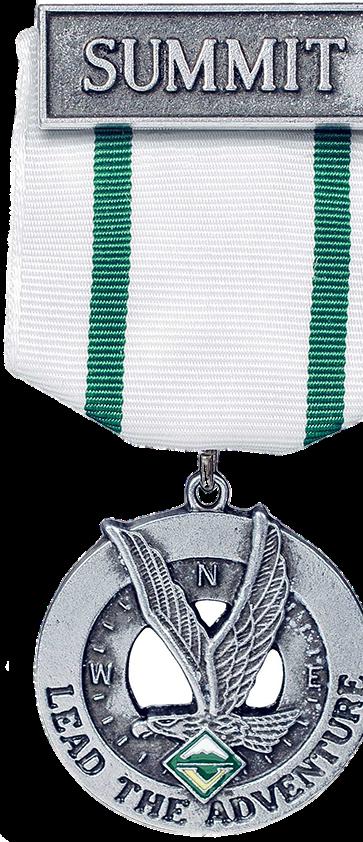
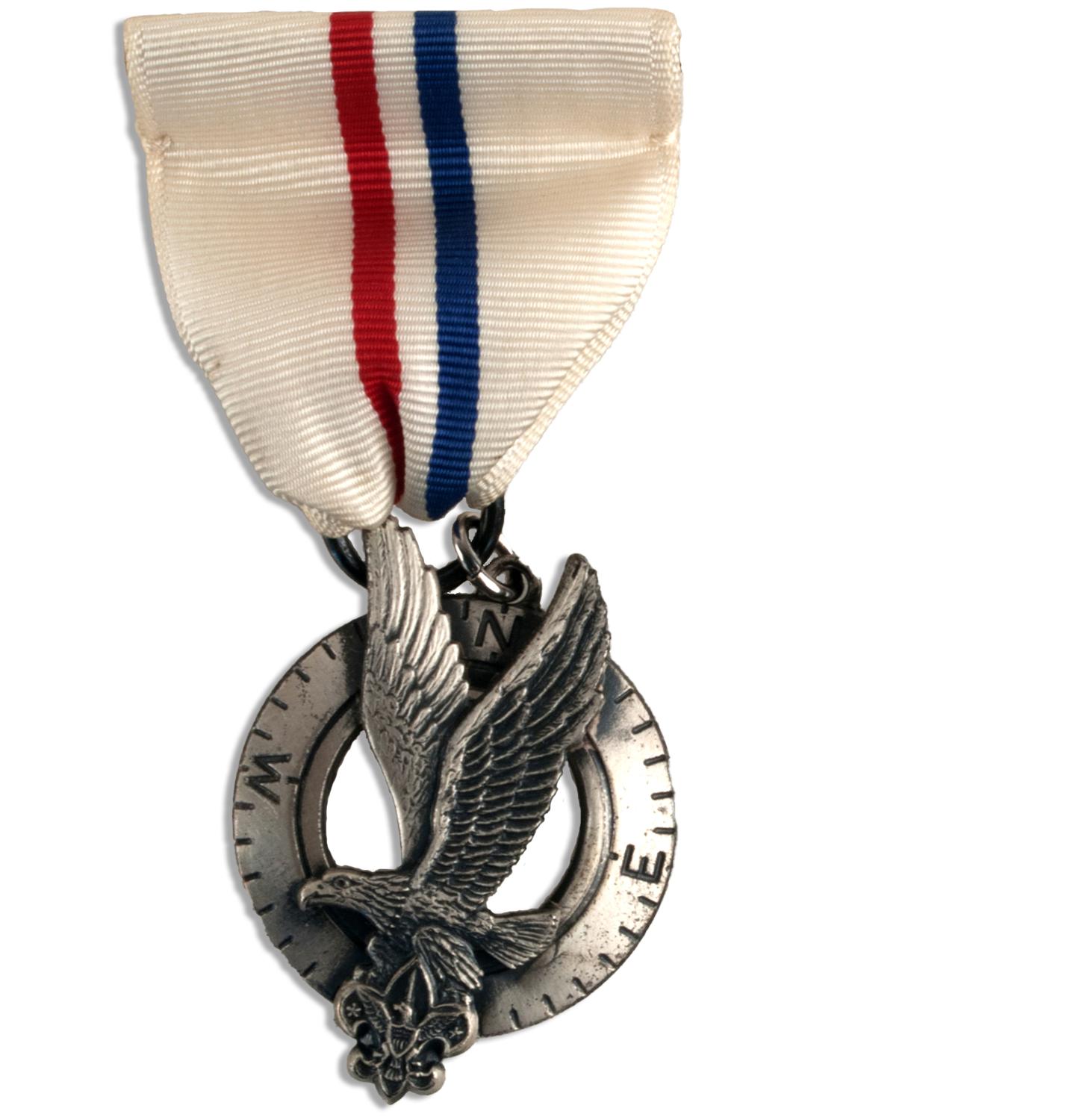
The Venturing Summit Rank is available to all Venturing youth members of the Boy Scouts of America. Its purpose is to provide a pathway for personal development and encourage Venturers to learn.
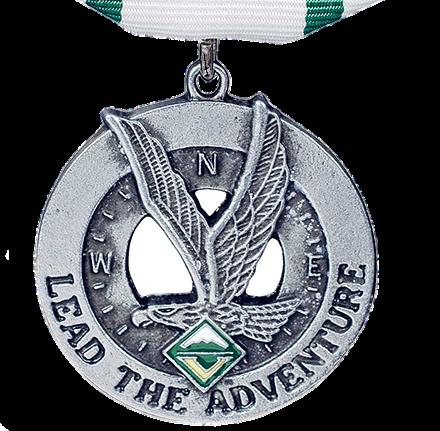
Earning the Venturing Summit Rank is a huge accomplishment, so if you’ve completed your Summit Rank, we’d love to hear about your experience! Tag us on your social media posts about your Summit project or email NationalVenturingCommunication@gmail.com.
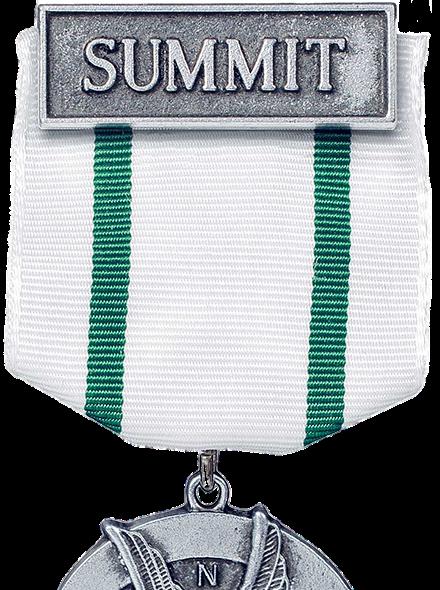
Come celebrate Venturing’s 25th Anniversary at the National Jamboree!
Jamoree is the ultimate outdoor experience where you will have the chance to participate in high adventure activities, see unforgettable shows, make life-long friends, and much more. And it’s all happening at the Summit Bechtel Reserve--the iconic “home of Venturing!
To support BSA’s Older Youth Programs at the 2023 National Jamboree, we’ve designated a Subcamp to Venturers, Sea Scouts, and Explorers and will be ofering special program opportunities to BSA’s Older Youth Programs. Contact your Council today to learn more about registering for this once-in-a-lifetime adventure!



Venturing is often considered one of the Boy Scouts of America’s best secrets. If your Venturing experience is anything like mine, you’ve probably been asked at least once what the green shirt signifies. Yet while many people don’t know exactly what Venturing is, those involved often take away irreplaceable experiences and skills. For this reason, I thought I’d let more people into the secret of why youth love Venturing. I talked with a variety of Venturers across the nation and tried to come up with a list that captures the unique benefits and culture of Venturing.
Before I begin, I first want to state that by enrolling in Venturing, a youth does not need to abandon their current unit. Scouts can be registered with multiple branches of the BSA at the same time, so there’s no need to choose one program over the other. In fact, I would highly recommend trying out multiple Scouting programs as each one offers something unique and the different experiences are highly valuable. Of course though, the focus of this newsletter is Venturing, so I’ll be focusing on what Venturing brings to the table.

One of the first things people tend to hear about Venturing is that it’s co-ed and for older youth. This alone creates an environment different from the typical Scouts BSA Troop.



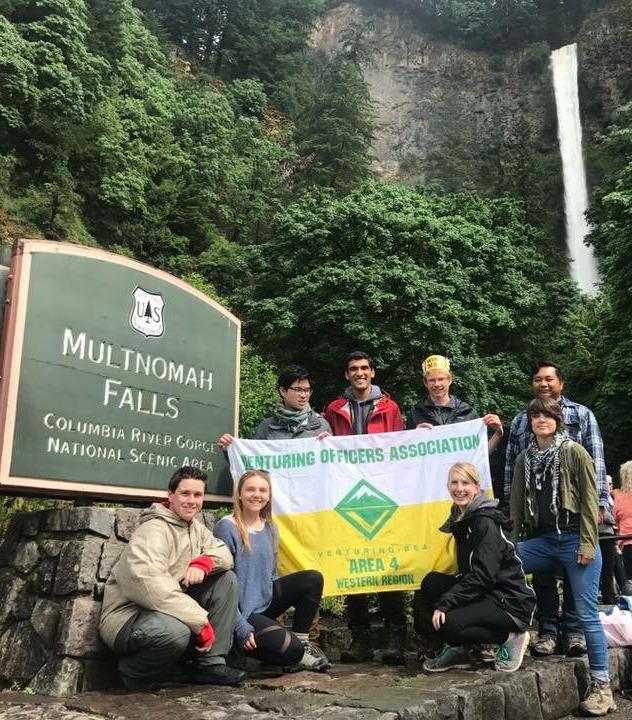

First, let’s look at the impact of having a co-ed space. Venturing -- along with Sea Scouting, Exploring, and STEM Scouts -- allowed female youth participation long before and in a different capacity than Scouts BSA. Venturing allows for all genders to interact within the same unit (of course, precautions are implemented to ensure safety), and I have found the benefits of a co-ed space to be game-changing.
Having multiple genders in a single unit draws in a more diverse demographic of youth, and with that, there is a greater diversity of thought processes working together to achieve a common goal. While the goal may be as simple as planning a hiking trip or trying to start a fire, the diversity allows for better teamwork skills to be developed.
By working with those who think differently than them, youth learn how to let different thought processes balance each other out so that the crew can achieve their goals in a more effective manner. One example of this is the way I have seen Venturing Crews consistently achieve higher scores than older BSA patrols at Camporees. Since the ages of the scouts were roughly the same and the Boy Scouts actually had more Scouting experience, one of the main contributing factors my peers and I have credited for these results is that of our crews being coed and therefore having a deeper shared ability to think critically.
Further, I -- along with many others -- have benefitted from this diverse collaboration as I then learn to see situations more holistically and I get used to thinking about solutions to problems from different angles. I truly do not believe that I would have had the same personal growth outside of a co-ed program.
The age of Venturers rang ing from 14-20 also natu rally fosters a different envi ronment. Not only are older youth able to participate in a larger variety of events due to less of an age restriction, but youth are also able to bond in a different way. When age and gender factor in as they do in Ven turing, a more balanced culture of acceptance and personal growth is formed.
Because Venturing is composed of older youth, we also give Venturers more responsibility through assuming a youth-led approach. From planning Crew events to changing the future of the program as members of the National Venturing Commit tee, youth lead the program and are given a wide array of opportunities for leadership. Having Venturers in leadership positions creates a program that better matches the interests of Scouts as well as encourages great personal growth.
Venturers being in charge of the program leads to a very flexible program. For instance, crews get to decide what events interest them and what they want to focus on. Beyond the traditional crew that participates in a wide variety of activities, I’ve also heard of crews that focus on events related solely to Dungeons and Dragons, NASCAR,
or soccer. Older youth tend to have some idea of what interests them, so in Venturing, they get to design a program that interests them and fits in their busy schedules. This helps with the retention of older scouts and makes each crew experience unique.
Even at a national level, youth are constantly ensuring that Venturing as a whole is meeting the needs and interests of its members. With youth in high-level leadership positions, they get to strengthen the aspects of Venturing that we all know and love as well as propose and implement changes that advantage youth.
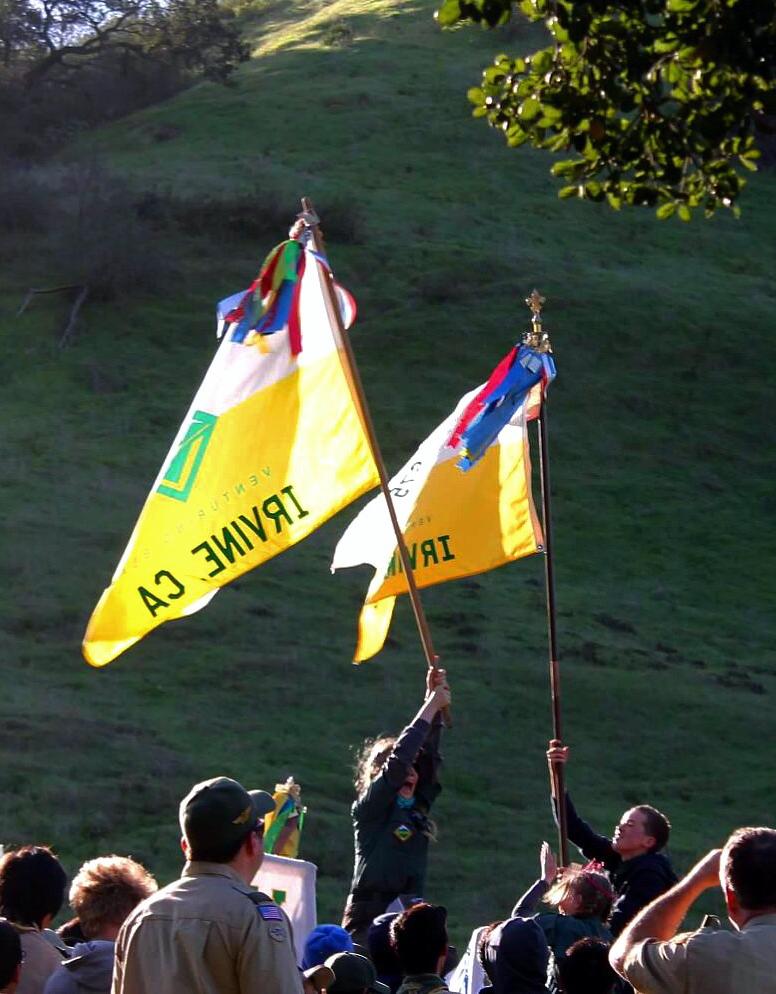
Whether contributing at a crew level, national level, or somewhere in between, leadership positions afforded to youth through Venturing help them reach a higher potential at a young age. After just one year of participating in Venturing leadership, I grew from being uncertain of myself to confident in leading a room full of others older than me, which is not an uncommon story amongst youth Venturing leaders. Confidence has immeasurable value, but the confidence Venturers build in their leadership is often partially due to the numerous skills they acquire.
With Venturing serving older youth who are often beginning to think about their future professions, Venturing strives to prepare
their futures. As I already mentioned, I gained much confidence in myself through the ability to lead, and this translates to the confidence I now have when talking to adults. Time and time again, I have seen Venturers thrive in their new work environments because -- unlike many of their peers -- Venturers have learned that they have valuable opinions and ideas to contribute and they’ve learned how to express themselves in a clear and respectful way. This sets them apart from their peers and gives Venturers an advantage in their future professions.
Connected to the ability to lead and confidence built in Venturing, as Venturers learn to plan events, they learn countless skills such as organization, time management, delegation, critical thinking, written and verbal communication, and more. Further, with the wide array of opportunities for youth, Venturers have the chance to pursue different avenues that interest them. This leads to Venturers often discovering passions and building marketable skills that will be used in their future careers.
For instance, I was entirely unaware of the world of public relations before Venturing, but after learning how to manage social media accounts, write newsletters, connect to others through emails, and more, I decided to enter the world of PR. My professors and employers are often impressed with the skills I have already acquired, but Venturing is the sole reason I have so much experience in the industry. I’ve talked to others who have entered the fields of photography, conservation, politics, and more, and many often attribute Venturing as the reason they were able to discover their passions and develop their skills to thrive in their careers.
The adventure, leadership, personal growth, and service opportunities afforded to me through Venturing have been life changing, which is why I love Venturing. How about you? Why do you love Venturing? Share it with us on social media!



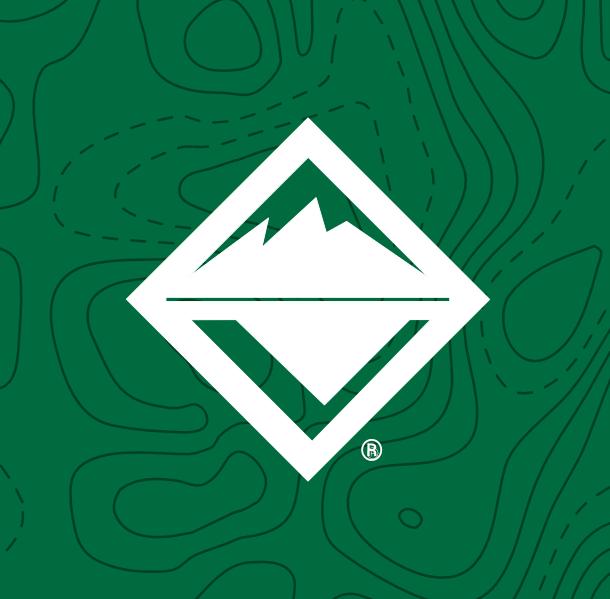


GETTING TO KNOW YOUR
 TARA IZADI | NATIONAL VENTURING PRESIDENT
TARA IZADI | NATIONAL VENTURING PRESIDENT

WHAT ARE YOUR GOALS FOR THE UPCOMING TERM?
The platform of the 2022-2023 National Venturing Officers’ Association is to: redevelop relationships, provide resources to strengthen Crews and TVOAs, make the VOA easier to reach, and develop ways to increase and better retain membership. The Venturing program is nothing without the strength of our Crews and Venturers, so as a team, we plan on providing individualized support to units. The VOA is a resource for you, so if you ever have any questions, please reach out to your local VOA. If you do not know how to reach your local VOA, please message Venturing, BSA on Facebook or Instagram and we can redirect you to the proper channel.
WHAT FUTURE CAREER ARE YOU CONSIDERING?
I am considering a career in medicine, specifically pediatrics or geriatrics. I have always loved working with kids, and even volunteered in my local hospital’s Neonatal Intensive Care Unit. I am also minoring in Gerontology, the study of aging. The two disciplines may seem very different, but I am ultimately interested in helping people live fulfilling lives through medicine.
WHAT’S ONE FUN FACT ABOUT YOU?
I once had a giraffe sneeze on me.

WHAT ARE
 PRESIDENT OF ADMINISTRATION
PRESIDENT OF ADMINISTRATION
The thing that first comes to mind is revising CSVE for this year. In the past, the system has not been focused on Councils that are working on improving their Venturing presence, but rather those that already have a strong CVOA. Supplying Councils that have low Venturing metrics with tools to improve their Venturing programs through the CSVE form will be more beneficial than what has been done in the past.
WHAT TV SHOW ARE YOU CURRENTLY BINGE -WATCHING?
I’ve been making my way through Stranger Things again in preparation for the last two episodes in July. I also just finished Ozark, which I would highly recommend. Both of these are on Netflix, but also highly bingeable, so be careful….
WHAT’S ONE FUN FACT ABOUT YOU?
I have a pet duck.
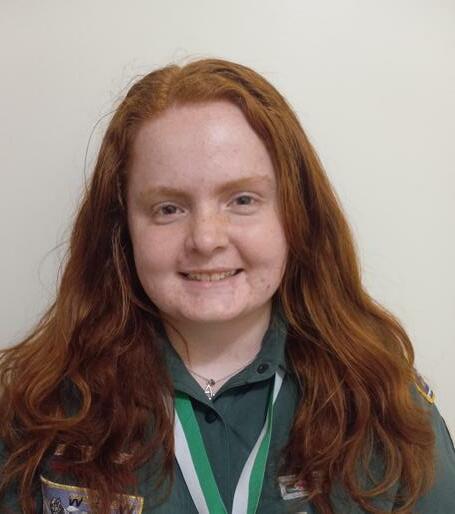
WHAT ARE YOUR GOALS FOR THE UPCOMING TERM?
I have always been focused on the connections of the Venturing program and what it does to other people. One of my biggest focuses this year is reconnection of other Venturers, especially on the territory level. Last year as a territory president, I had no clue who my other co-presidents were and I really wanted to find a way to reach out to them so we all could work together to grow the Venturing program. I will be hosting social calls with everyone to just connect and debrief about whatever they want. This year, I will also be focused on growing the membership of Venturing. I will be hosting webinars throughout the trimesters on ways to retain youth longer, how to start CVOAs, how to host council wide events, and more.

WHAT FUTURE CAREER ARE YOU CONSIDERING?
The goal in the end is to become a licensed veterinarian. I’ve always had a passion for treating animals since a young age. I at one point in my lifetime had 13 cats and 3 dogs, now I’m down to 5 cats and 2 dogs. I hope to establish my own clinic and be divulged into both small and large animal medicine; all animals will be welcome.
WHAT’S ONE FUN FACT ABOUT YOU?
At one point, I had two birth certificates.
WHAT ARE YOUR GOALS FOR THE UPCOMING TERM?
One of Micah and my larger focuses is to create a term calendar for the Territory Presidents; ensuring they know of upcoming deadlines and prioritizing tasks to be working on throughout the year.
WHAT TV SHOW ARE YOU CURRENTLY BINGE -WATCHING?
I am currently binge-watching all of the Marvel spin-offs on Disney+. Yes, I’m a little behind, and working on Moon Knight now. Some other good shows I suggest are Merlin on Netflix, or The Summer I Turned Pretty on Amazon Prime.
WHAT HAS BEEN YOUR FAVORITE VENTURING EVENT TO ATTEND?
That’a a tough pick. One of the most recent events that I attended and really enjoyed was Major Mayhem hosted by the South Florida Council VOA. It was a chaotic weekend full of torrential downpour but amazing scout spirit; filled with Scout-themed Olympic events.
WHAT’S ONE FUN FACT ABOUT YOU?
I can lucid dream.

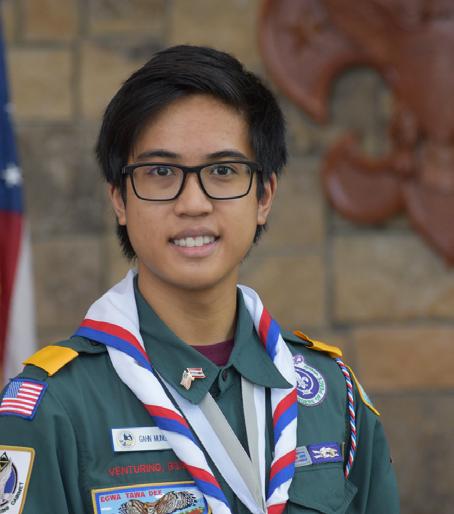
My overarching communications vision is to make Venturing’s identity energetic, engaging, and approachable. I plan to overhaul the Venturing marketing toolbox with fresh, up-to-date, and customizable materials so Crews and VOAs can focus more on building a great program than figuring out how to make flyers. I also aspire to make Venturing’s online presence a place to find inspiration for your next adventure by sharing what other Venturers, Crews, and VOAs have done. To tie it all together, I intend to engage with the Venturers, Crews, and VOAs that lead the adventure. So, DM us pictures of your adventure (Scouting-appropriate Venturing memes are also appreciated) and tag your Territory VOA on social media!
I am considering a career in mechanical engineering and have a strong interest in civil aerospace. I love the research and development side of engineering (must be my inner “let me take apart my toys” talking) and pushing the boundaries of what’s physically and technologically capable. Combine that with a love for airplanes, and that leads me to ask myself what contributions I can make to help bring the next Queen of the Skies to life.
WHAT’S ONE FUN FACT ABOUT YOU?
I can drive a manual car.
MICAH VACCO | NATIONAL VOA VP OF TERRITORY SUPPORT - WESTERN TERITORIESOlivia and I really work together on all of our goals, so I most certainly agree with making sure presidents know deadlines and are aware of upcoming events. I personally want to have a really good relationship with my Territory presidents since we work so closely together throughout this term, so building connections is one of my biggest goals.
This past year (2021) I got to go with Crew 774 in Orange County, California on a once in a lifetime trip to Argentina and Antarctica. It was truly life changing for me and made me change my major from Business to Environmental Science as I discovered a new passion for protecting the outdoors. Gettingto meet so many scouts from across the country was also an incredible experience.
WHAT’S ONE FUN FACT ABOUT YOU?
I have a rare genetic condition that makes me extremely flexible
Getting involved with Councils has many great benefts. Councils are able to ofer support to crews in multiple diferent forms. Perhaps the most tangible support comes in the form of resources, trainings, and events that give crews and individual Venturers more opportunities than they would have on their own. Beyond the tangible support, when a crew is involved with their Council VOA, they get to ask other crews for advice, learn from the way diferent crews function, and gain fresh ideas for events. Even without
Why should a crew get involved with their Council VOA? ASKED BY DYLAN What’s the beneft of earning the Summit Rank? ASKED BY ANISH
First and foremost, completing all of the steps to earn the Summit Rank takes a Venturer through a journey. This journey includes incredible experiences as they meet the adventure requirements; personal growth as they work through various trainings, leadership requirements, and refections; and the opportunity to take pride in a project that helps a community. At the end of this journey, Venturers can feel proud of what they’ve accomplished for both themselves and others. Further, be-
talking to other crews in your council, simply watching how your VOA plans an event is a good demonstration of how a successful crew might operate. In addition to all of the learning opportunities, you may just want to get involved with your Council VOA because it’s fun! At Council events, you get to participate in a diferent assortment of activities with diferent Venturers and Advisors than those involved with your crew. You may end up making life-long Scouting friends just by putting yourself out there.
yond the practical skills that Venturers learn throughout their trek to Summit, the ability to complete such a large goal is something that refects very positively to others and is a great resume booster for when Venturers are applying to jobs. After earning their Summit Rank, Venturers also have the opportunity to apply for several scholarships that are only available to Scouts who earn the highest honor in their respective program.
Inrecognitionofexceptionaldedication,leadership, andservicetoVenturingattheNationallevel.

Bernie is a lifelong Scouter who currently serves as the National Venturing Committee Chair. At the time he took on the position, Venturing was going through a lot of changes. Bernie tackled these challenges with great stride to help strengthen and better the development of Venturing. Bernie’s leadership and support of older youth programs has shaped the program greatly.
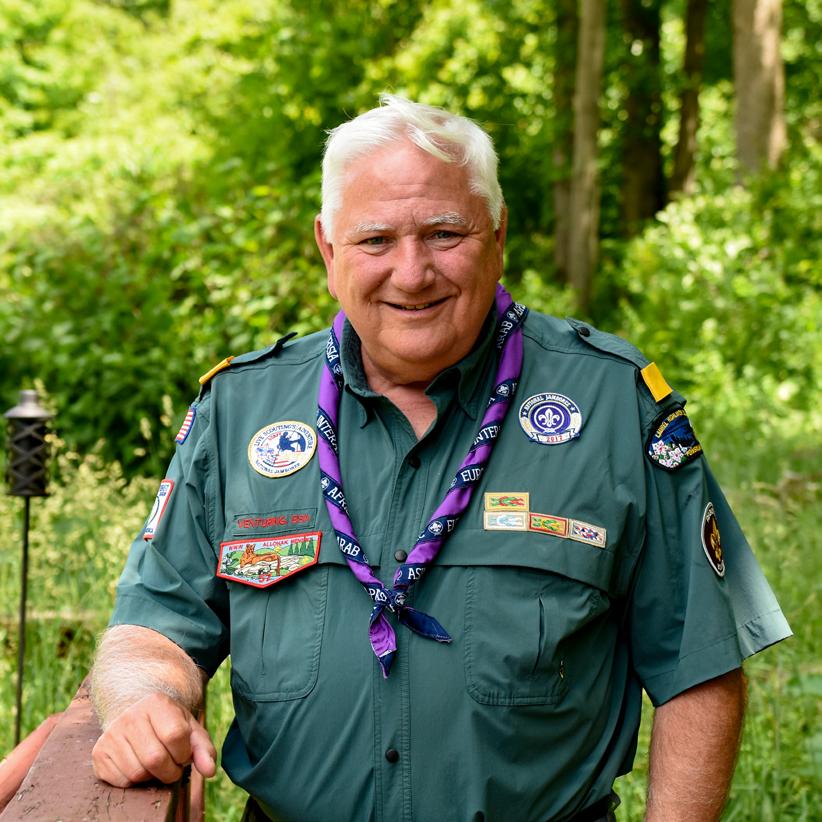

Carina served as the 20212022 National Vice President of Territory Support, where she worked with 8 National Service Territories to strengthen and build their structure so that they could best support their councils. With this being the first year since the restructure from Area/Region to the National Service Territories, Carina has truly defined this role and given it a strong expectation for the future.
Cynthia serves as the National Venturing Training Chair. In this role, she oversees the development and implementation of Venturing related training throughout the program. Her role requires her to promote and review all related training materials to ensure they are accurate and being implemented to have the best impact on those being trained.
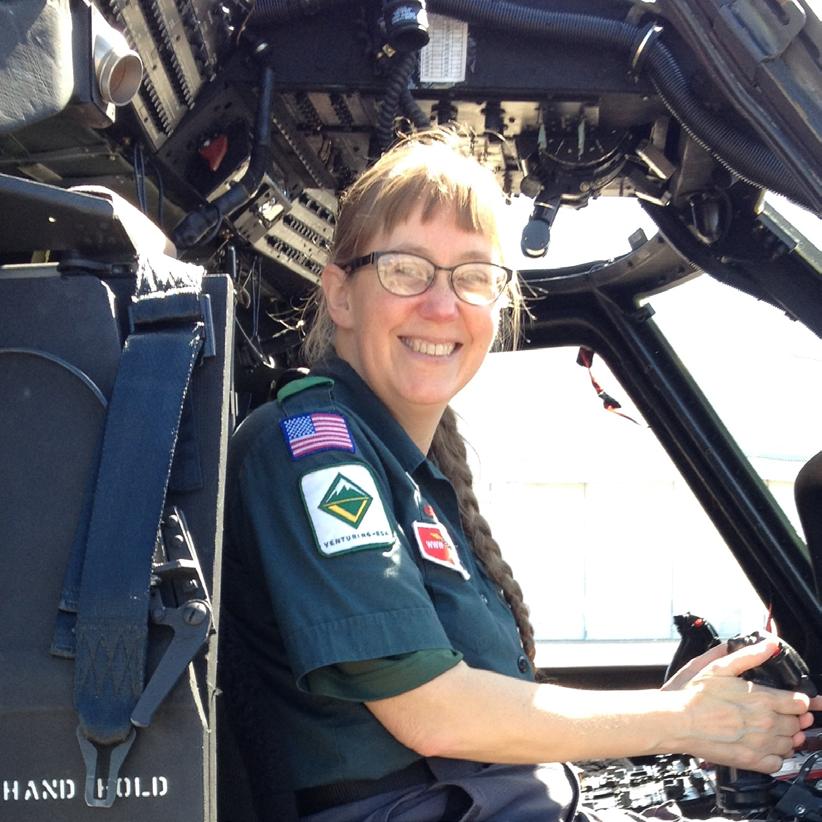
Freedom served as the 2021-2022 National Vice President of Program. In this role, he promoted all Venturing programs and worked to develop engaging programs for Venturing members. He is a servant leader who humbly puts the needs of his team and projects first and his positive attitude makes it a pleasure for all who get to work with him.

Gail is serving as the National Venturing Commissioner. In this role, she focuses on the retention of membership by providing direct support to each Crew throughout the country and assisting with the recharter process. Since Gail has become part of the team, it is clear that her efforts and focus on Venturing membership have made a difference within the Venturing program.
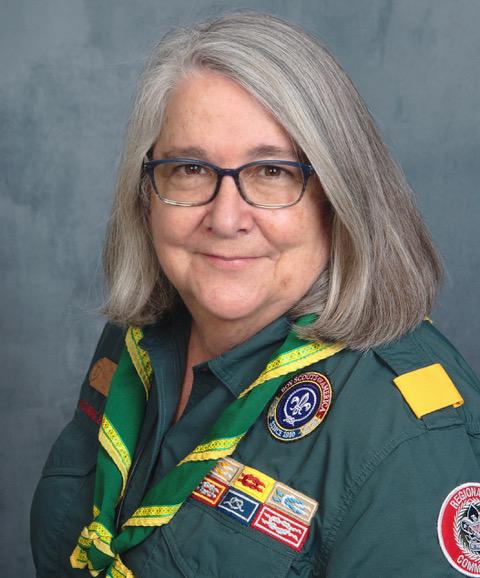
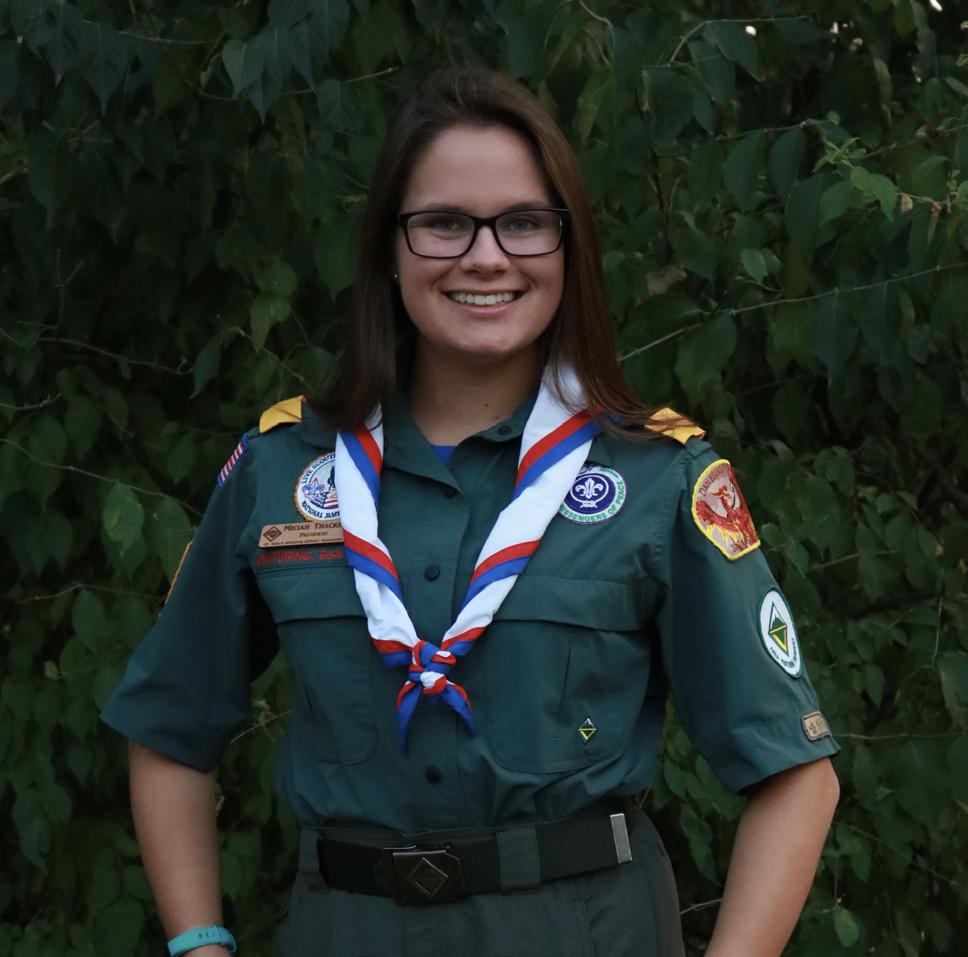
Miciah served as the 20212022 National Venturing Vice President of Administration. Miciah works tirelessly to manage tasks and projects to better the Venturing program. One of her projects this year was to provide individualized feedback to every council on how to strengthen the Venturing program. Though she often works behind the scenes, Miciah’s leadership and hard work is what makes other people’s jobs possible.
Nicole is the Founder and Editor in Chief of The Venturing Newsletter, which is designed to unite, inform, and inspire Venturers across the nation. Each edition of The Venturing Newsletter requires countless hours of planning, communicating with various contacts, writing, editing, and graphic designing. Her efforts and impact on Venturing have far exceeded expectations.
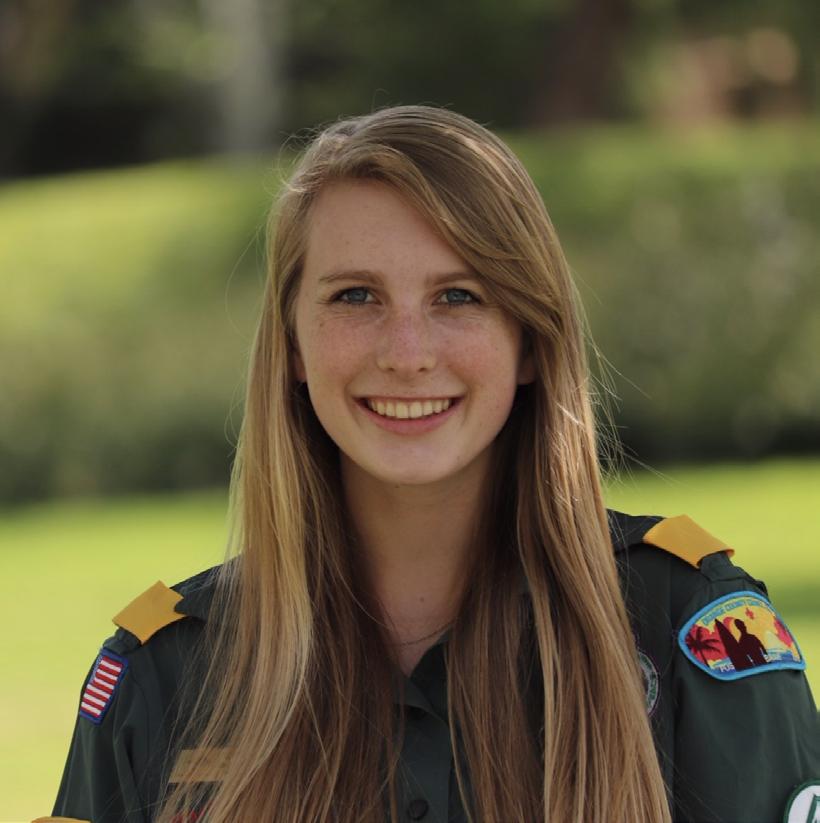
Rick has held many roles in Venturing, including Western Region Venturing Advisor and the 2018 VenturingFest Program Director. Rick is also often called upon as a subject matter expert for the Ranger Award and helps ensure the requirements of other awards are current, educational, and engaging. In all of his roles, Rick provides great leadership and always leaves smiles on the faces of those he works with.
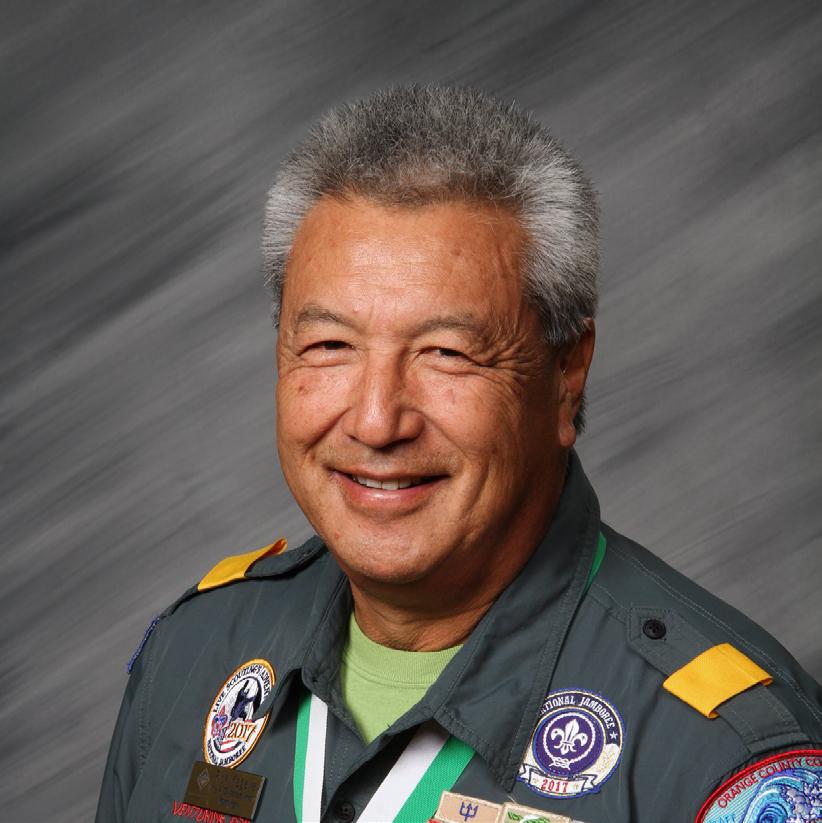
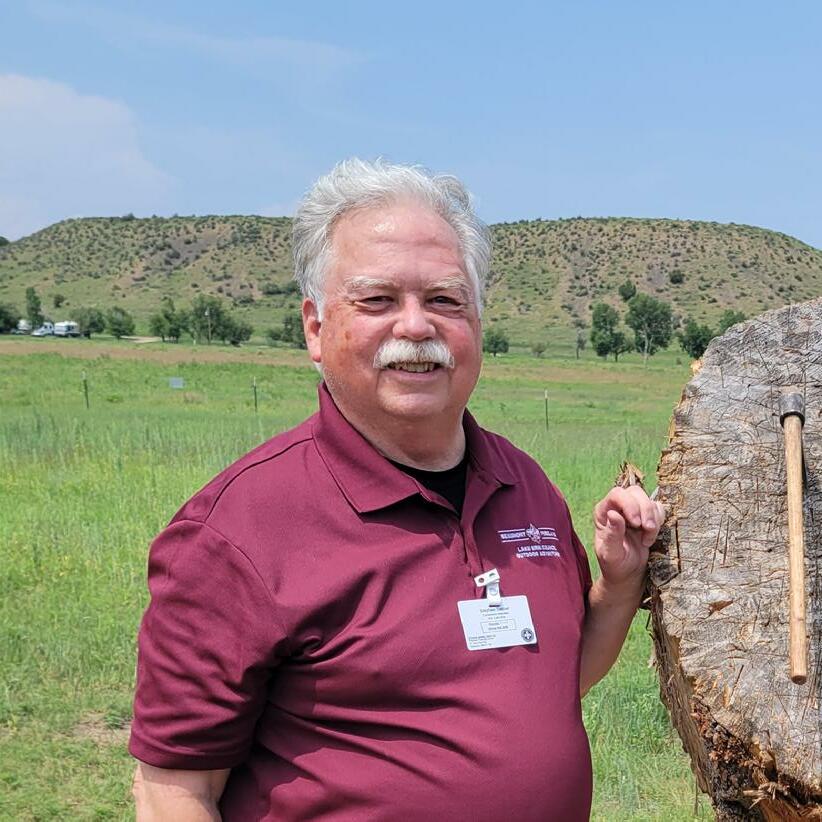
Steve is in the supporting role of the National Venturing Commissioner and obtains many reports regarding Venturing membership. After analyzing these reports, he puts together useful, personalized reports regarding membership and analytics that the National Service Territories can use to strengthen their councils and focus on membership recruitment and retention.

Steven served as the 20212022 National Venturing Vice President of Communications. The Transition from the Area/Region structure to the new National Service Territory structure was bound to be a huge communications challenge, but Steven handled it diligently. Steven reorganized all social media accounts by consolidating and redistributing existing ones and creating new social media management accounts.
Tanadet -- more commonly referred to as “T” -- is serving as the National Venturing Committee Vice Chair of Administration. In this role, he manages and supports several sub committees that are critical to Venturing’s success. He often provides many resources and helps others collaborate to strengthen the development of the project. T’s hard work and support helps many reach their fullest potential.
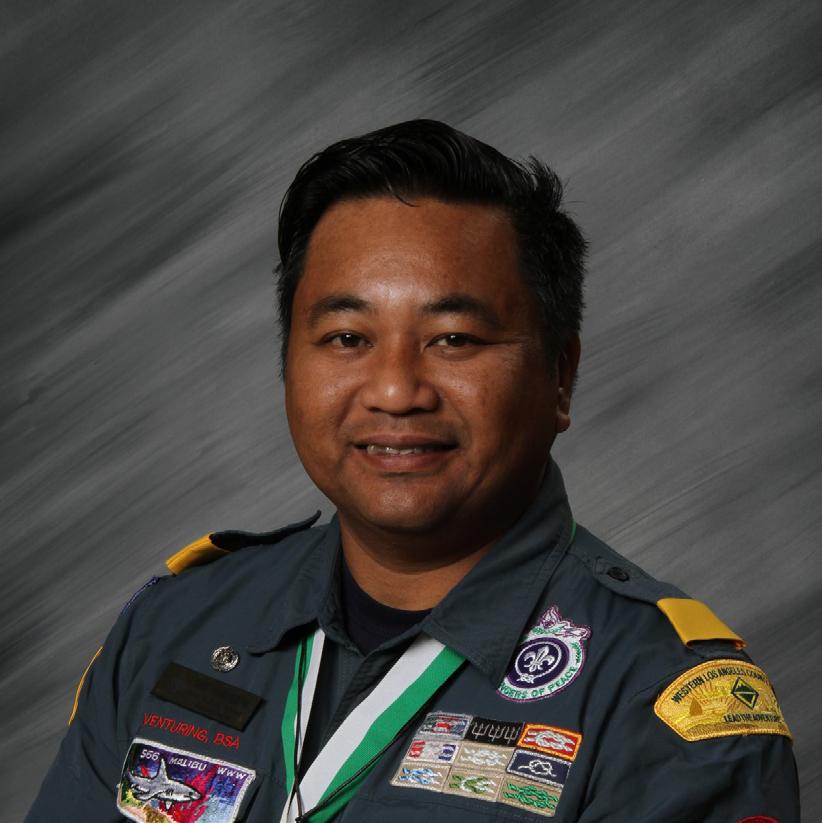
Tara served as the 20212022 National Vice President of Territory Support and is this year’s National Venturing President. Last year, Tara gave individualized attention and communication to each territory leadership team. Her efforts have helped create a solid foundation for this position and the expectation for the future. Tara’s positive and supporting leadership style help many achieve their goals.
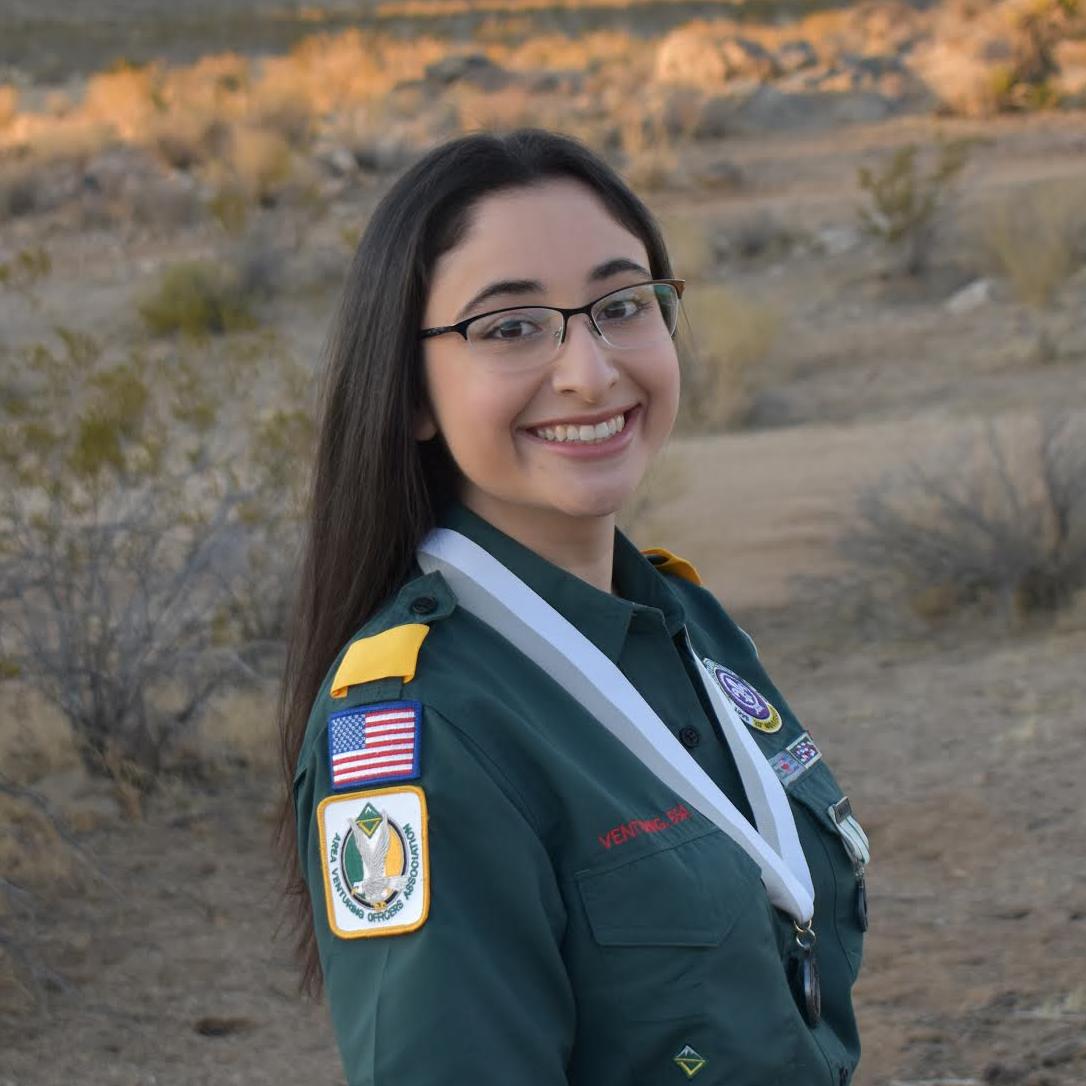
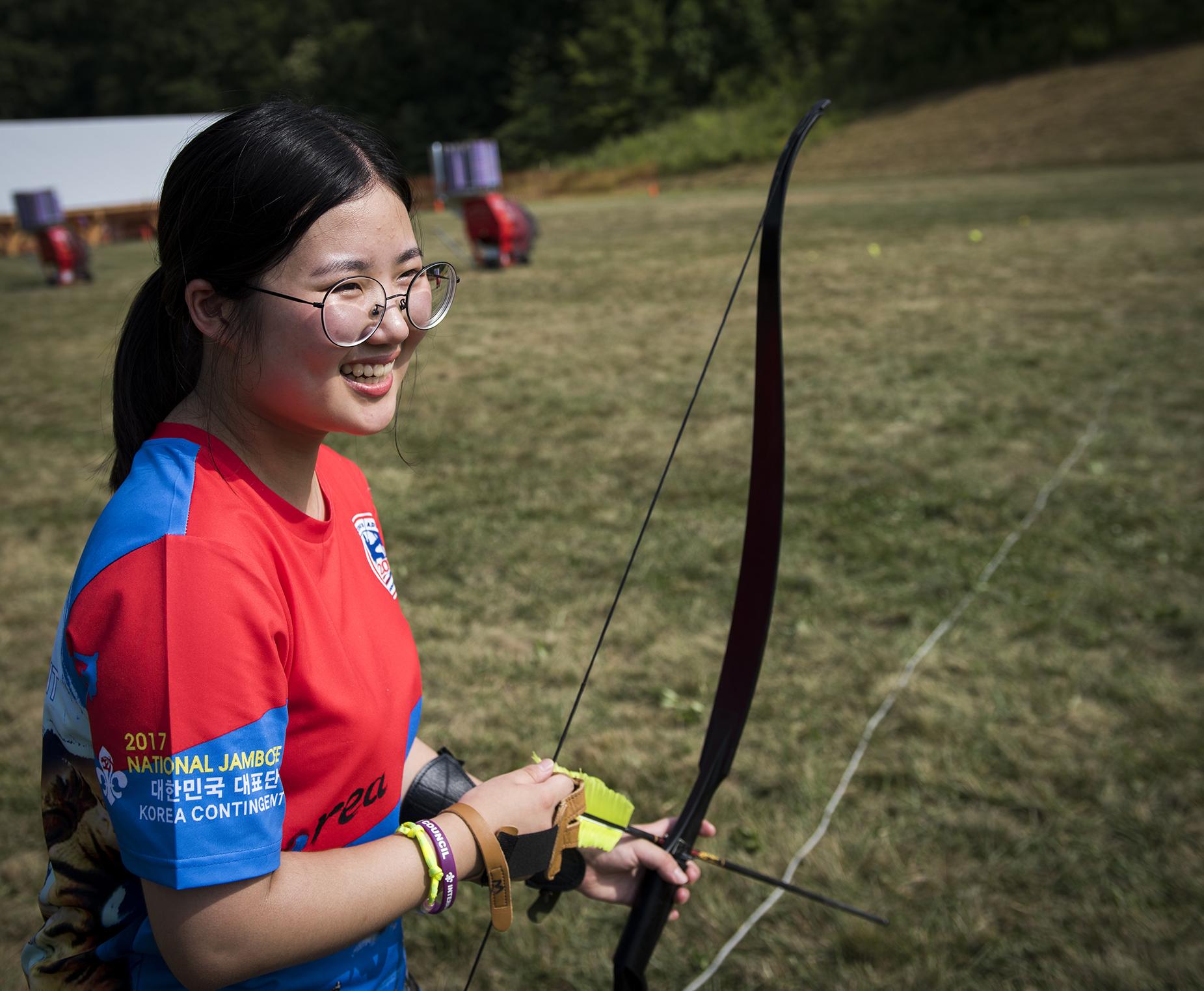
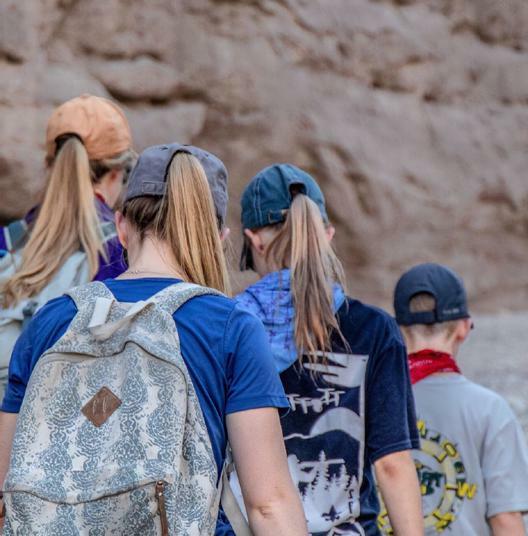
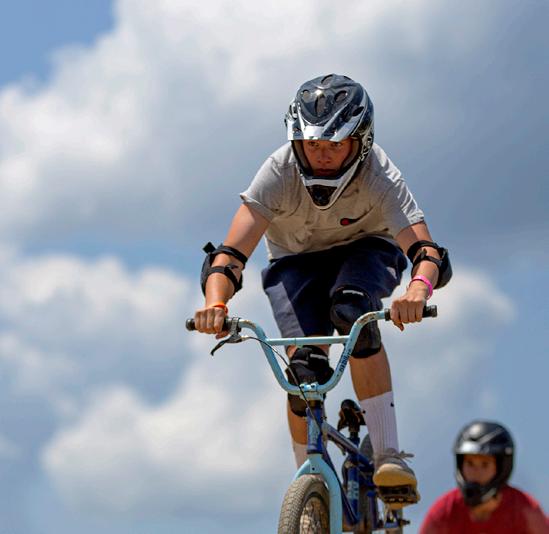

Many of you are familiar with JTECV, or Journey to Excellence for Council Venturing, and you may have noticed that this year, we have CSVE instead of JTECV. Why was it changed? Will anything else be changing?
JTECV has been used for the last several years to help Areas and Regions (and now Territories) understand the Venturing program at the Council level and identify areas of strength and goals for improvement and support. What some of you may remember is that before JTECV, we had CSVE (Council Standards of Venturing Excellence). CSVE served as the inspiration for JTECV, and having Council Venturing being included in the JTE program was a great step forward for Venturing. With the recent discontinuation of JTE for Cub Scouts and Scouts BSA, JTECV was returned back to CSVE to avoid it being confused with the other JTE programs.
With the change back to CSVE, very few other changes have been made. In previous versions, elective points were able to be counted a er 1700 points, which also earned a Council the Bronze level. Now, elective points are able to be counted a er 1600 points (which can be earned by achieving the Bronze points for every core requirement), with the Bronze level still being 1700 points or more. e hope is to allow more Councils that deserve the Bronze level to be recognized for their hard work. e only other change made to the 2021 CSVE is an asterisk (*) next to every mention of a VOA and the note *or equivalent structure. is allows for a broader range of Council-level Venturing structures to be included and earn points that had previously been restricted to VOAs only.
CSVE serves to ful ll the same purpose as JTECV: to give Council Venturing goals and feedback to help the program grow year to year. While few changes have been made this year, we are open to reviewing and editing CSVE in future years so that it can be more e ective at helping Councils grow.
 written by Nicole Steele
written by Nicole Steele
One of my favorite aspects of Venturing is how it prepares youth for their futures. e leadership, time management, event planning, and teamwork skills Venturers gain through the program teach them practical skills for any future job, and the additional positions some Venturers take on teaches more speci c skills that may be applied to their speci c interests.
As I’ve stepped into the world of internships, I’ve been amazed at just how much Venturing has changed the game for me. Not only did I enter the workforce with practical experience on my resume from my Scouting positions that pleased employers, but I also have been able to perform with more con dence than other interns and have a better initial grasp of certain work expectations thanks to my time in Venturing.
Venturing both emphasizes personal growth and serves young adults who are beginning to enter the workforce. Because of this, I thought I’d share some tips I’ve learned about securing an internship or job. I’m going to break down these tips over the course of the next three newsletters, but to start the series o , I thought it appropriate to begin by talking about resumes and cover letters.

A resume is a single page detailing your quali cations. ere are many great templates detailing what to include in a resume, but to seem like a better candidate for the job, consider the following tips:
1Translate your Scouting experience. Whether you realize it or not, you likely have many quali cations from the trainings you’ve taken and the positions you’ve held in Scouting. One overarching piece of advice for Scouts speci cally when it comes to applying for positions is to describe your experience in a way that relates to non-Scouts; instead of using Scout lingo, translate your descriptions to use vocabulary found in your desired workplace while remaining true to the reality of the position you held. For example, one friend I have was the Western Region Area 4 Venturing President. Instead of expecting employers to understand what that meant, she explained that she ran the Southern Californian division of a non-pro t organization for youth
and young adults to gain experience in leadership, adventure, service, and other personal growth activities.
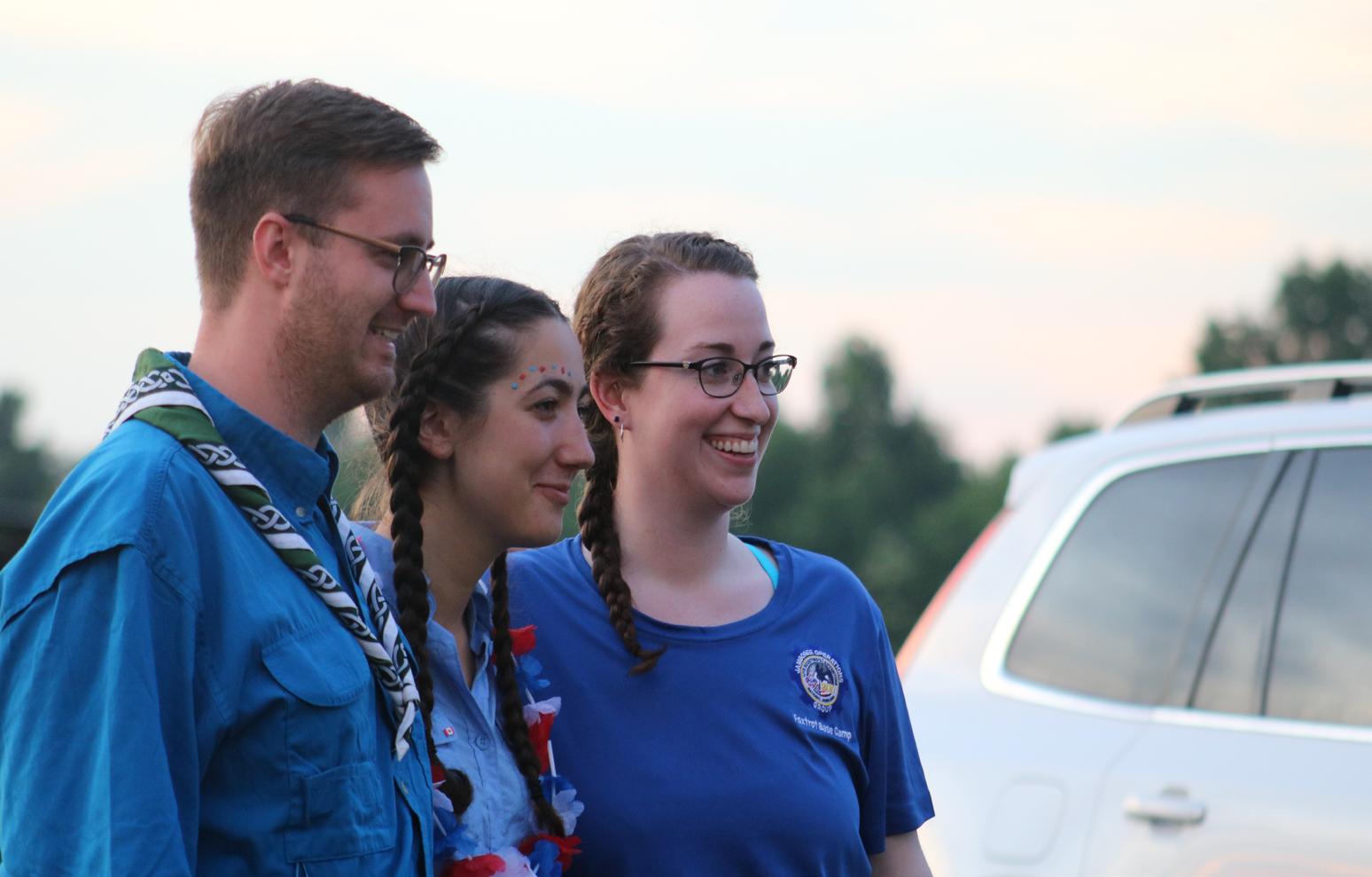
2Tailor your resume to t the job you want. If you have more experience than would t on a single page resume, choose what to include based on what best matches the job description of each position you are applying for. For instance, if you are applying for an administrative job, you may want to talk about the times in Scouting that you’ve planned events, handled a budget, or led a group.
Use power sentences. Each job description should have 3-5 bullet points describing di erent aspects. e best way to format these bullet points is by using the following format for power sentences: an action verb + the task + the related outcome. An example of this in my own resume is “Represent + Venturing, BSA on a national level + to over 1,000 readers per issue.”
Be sure to include key words. Read over the application and what is expected of the person hired for the position you are applying for; are there any key words describing desired skills or experiences that stand out? If applicable, be sure to include those in your resume! is will help you seem like a more obvious candidate to those quickly skimming through hundreds of resumes, or may even help you make it past digital screening.
5Arrange it in an easy-to-read format. ose in charge of hiring do not want to have to search for information about you. Your resume should have clearly de ned sections such as education, experience, skills, and certi cations. Within each section, don’t hide the best features. For instance, if I am applying for a position where I will have to write press releases, I would want to make my experiences and skills that relate to written communication the rst ones they see. One easy way to do this is to re-arrange the power sentences describing your previous positions so that the rst bullet point of each position is the one that mostly closely resembles writing a press release.
Hiring managers get countless quali ed resumes piled onto their desks, so how can you stand out from the stack? Write a good cover letter. A cover letter is a good opportunity to show personality and passion to the hiring manager, which makes you more likely to land the position. It should be about 200 words in length, and as the name suggests, written like a letter. A er addressing the hiring manager, here are some things to remember while writing your letter:
Do not simply recap what is in your resume. ey will get there eventually; take this time to show them a di erent side of you. If you are talking about what is on your resume, provide new information or an explanation of how that experience can t into this position.
Show them that you are well-informed on their organization by including speci cs about their organization as well as about the position for which you are applying.
Show excitement. While it is also important to not come across as pushy or needy, show them that you are passionate about this opportunity.
Have any questions about these tips? Feel free to reach out to me at nationalventuringcommunications@ gmail.com or check and see if your school has a career specialist who can work with you.
1Focus on how you can help the company, not the other way around. is means you should have a good grasp of what the company o ers, their mission and values, and what they’re looking for in employees.
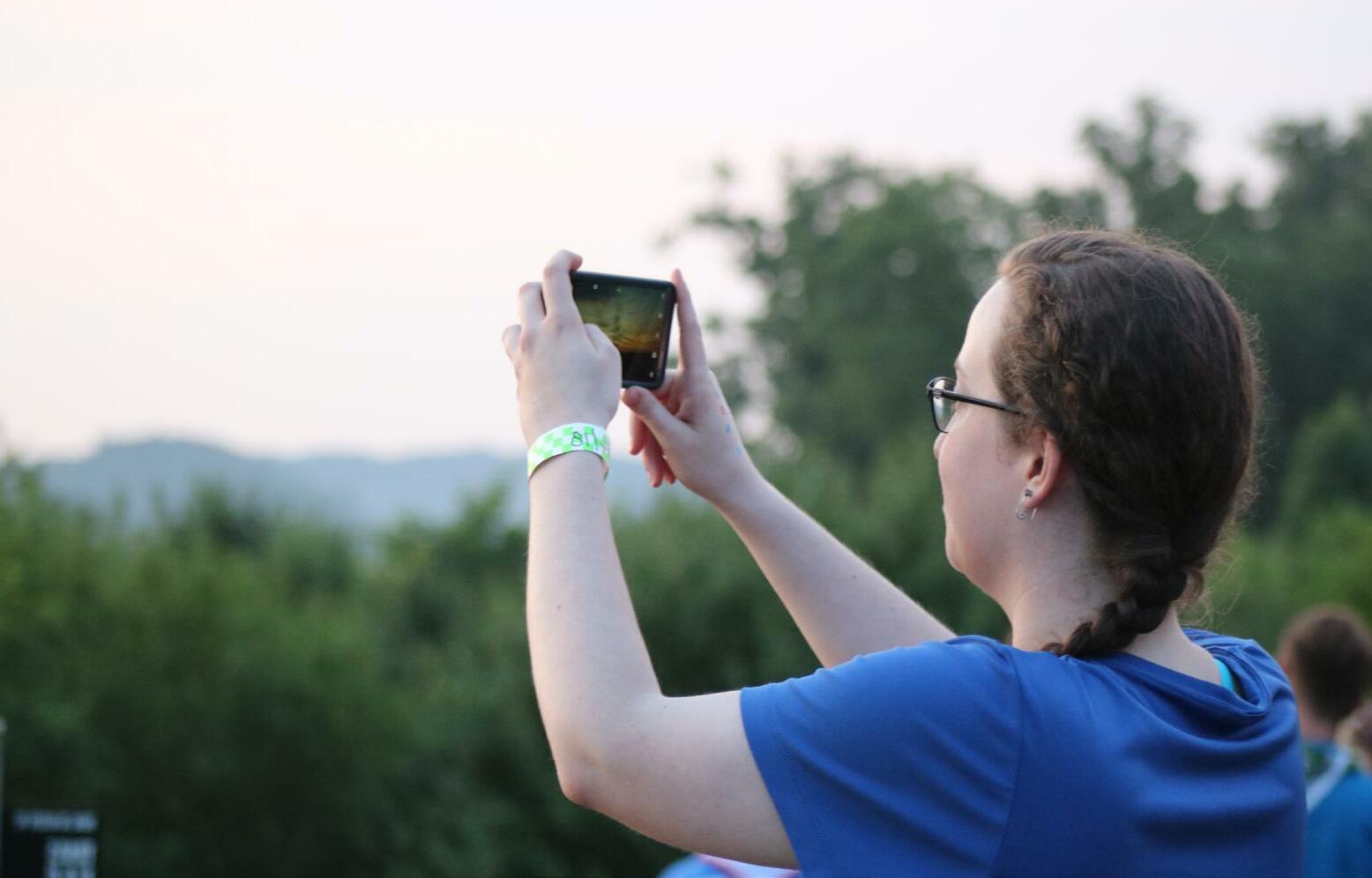



From the backwoods of California to some of the highest leadership positions in Scouts BSA, David Wilson is a trailblazer who has made strides in Scouts BSA, Venturing, and even Sea Scouts.
David got his start in Scouting when he was a youth himself. As an adventure lover from Silicon Valley, Scouting was the perfect place for him. From day one, David upheld the Scout Oath and Law, which led to his 1968 induction into the Stanford Area Council’s Order of the Arrow. Then, the same year Neil Armstrong made it to the moon, David also took “one small step for a man, one giant leap for mankind” by becoming an Eagle Scout. Still, David did not stop there. He continued to make his mark on Scouting.
After gaining experience as a Pack Committee Chair and Scoutmaster, David’s foray into Venturing leadership began with the start of the program as he became a Crew Advisor. From there, David continued to hold

 David Wilson ARTICLE BY DAPHNE KUNUKCU
David Wilson ARTICLE BY DAPHNE KUNUKCU
1.

positions such as the Utah National Parks Council 2000 Millennial Jamboree Venturing Program Chairman, National Venturing Task Force member, District Venturing Chair, Area 2 Venturing Committee Chair, and National Venturing Committee Member.
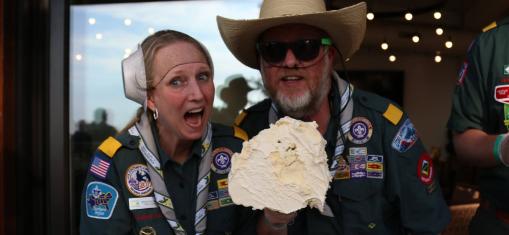
Outside of Scouting, David is a family man. He and his wife, Charlene, have six children and 12 grandchildren. David’s love for Scouting has been passed down to his children. He is also active in the Mormon church and heavily involved in his community, having been a member of the Elks Lodge, Orem City Community Development Block Grant Committee, Orem City Board of Adjustments, and currently serving as the Executive Director of the Utah Energy Conservation Coalition. No matter the role he assumes, David always manages to make people smile; anyone who has met David will note his humor that can brighten any room.
47 years, 31 trainings, and 32 awards later, “accomplished” does not even begin to describe David Wilson. As you can already see, one can go on and on about what he has done and continues to do. But, if there is only one thing you take away from this, it should be that David is a Scout for life.
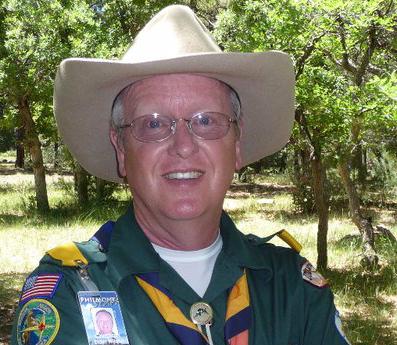
Through all of his experience, David has picked up a few tips and tricks. Specifically, here is some of his advice to other Venturing Advisors.
The role of the advisor is to do just that—advise. Step aside and allow the youth to “go for it.” No matter the Crew, VOA, or group you are working with, remember to set an example, safely guide the youth through unique experiences, and get out of the way!
Venturing does not revolve solely around the officers. It is crucial that all youth, no matter their rank/position/experience, be given the opportunity to serve and experience new things. Growth comes from all working together for the success of the unit. Foster a space where youth feel comfortable to learn, act, and share.
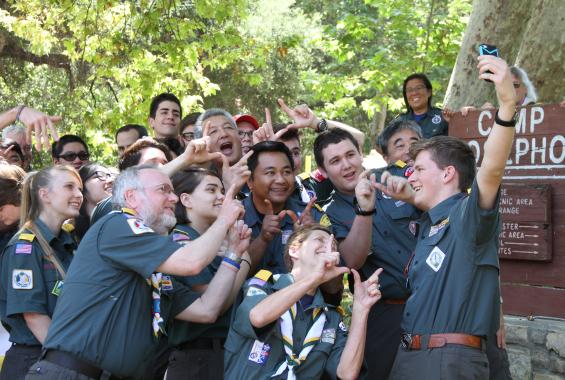
Fortunately, Venturing offers a wealth of resources and support for older youth. Youth may not always
be aware these resources exist, making it the responsibility of the advisor to share them. Knowledge and information are power.
Youth are observant and notice everything. So, be careful what you say and do! Project the best image of yourself at all times and strive to be someone your Venturers can look up to.
6.
Venturing is NOT about administrative work like sitting at a desk or staring at a monitor. The real reward comes from getting outside and exposing oneself to new experiences. Once you dare to change things up and step out of your own comfort zone, your Venturers will be willing to do the same. Both positive and negative experiences serve as an opportunity to grow.
Reflection is an understated and underused resource. Allowing your Venturers time for introspection will help
7.
guide them in both their Scouting lives and personal lives. Also, let youth they are not alone in their struggles. There are other youth, associate advisors, family members, religious leaders, and people that are ready and willing to help. Venturers should not be afraid to ask for assistance!



Cultivate a welcoming and judgment-free environment for both youth and adults. Venturers should feel comfortable asking questions and expressing their concerns without fear, and adults should feel comfortable not always having the answers to everything. No one should have to “walk on eggshells.”
Although it may seem tough to accept, life outside of Venturing exists. Keeping a balance between your Venturing life and personal/professional life is the key to a successful program. The same goes for youth. Things like family, health, education, and employment all come before Venturing.
Venturing does not work in a vacuum. Make sure you are maintaining an open dialogue with other volunteers, families, commissioners, and interested individ -
uals both inside and outside of Scouting. As we all share the same goal—encouraging the growth and development of our Venturers—we can all bring something to the table.

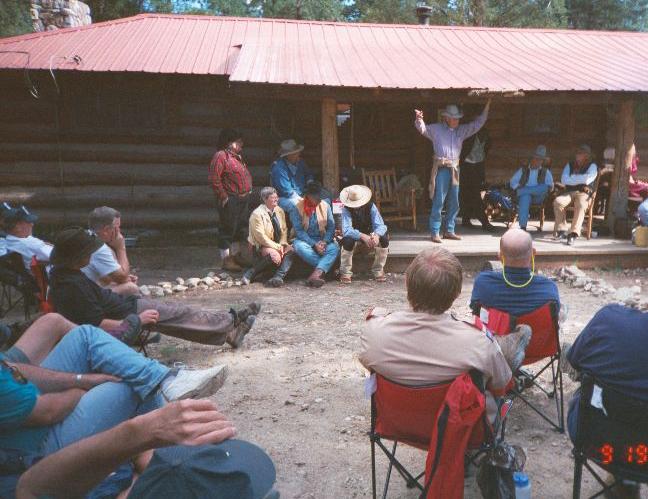

An effective program cannot be run without some financial support. Collaborate with your youth leaders to look for ways to increase revenue at all levels beyond dues. Selling popcorn is not the only way to raise money!
Take the time to recognize the achievements of your Venturers both inside and outside of Venturing. Acknowledge advancements in school, church, family events, and any other personal milestones. Don’t forget how amazing your Venturers truly are!

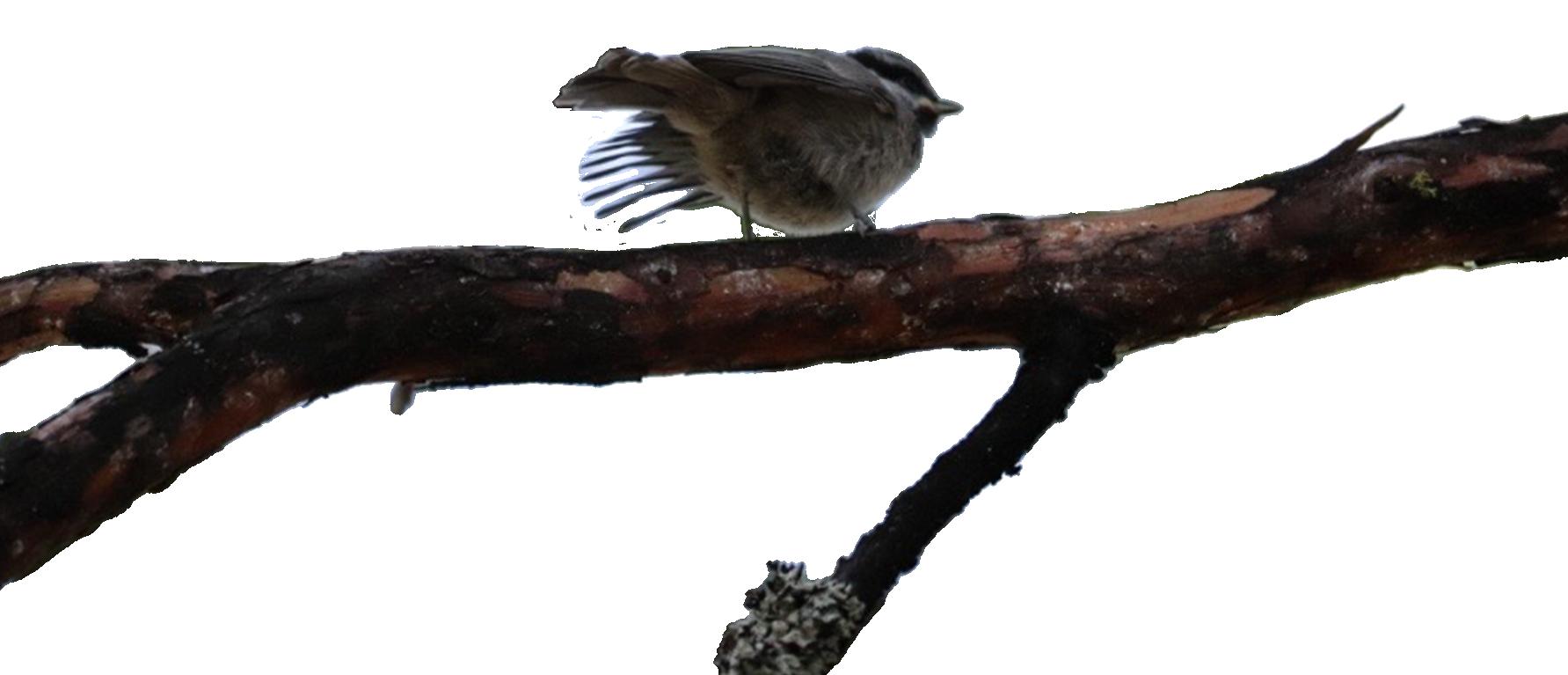
 Written by: Liam Daugherty
Written by: Liam Daugherty
ntroduced in 2014, the Summit Rank (previously known as the Summit Award) is Venturing’s highest honor. Since its debut, many Venturers have made the climb to the top and earned this achievement with pride, but one Scout was the very rst to reach Summit. Jeremy, a Scout from the Chief Seattle Council and later the Oregon Trails Council, was presented the Summit Award by Wayne Perry, former BSA National President, on February 16, 2015. His path to Summit, however, was anything but easy.
Jeremy began his Scouting journey in Cub Scouts before moving on to Scouts BSA. Eventually, he found himself in Sea Scouts and Venturing. Jeremey cites the values instilled in him through Scouting as a driving force behind his ability to set and reach goals, but it’s Venturing that he puts the most emphasis on in this area. “Venturing brought goal-setting to me and helped me set and achieve the goals that I strive towards in my current life,” Jeremy says. “While being a Scout brought me goal setting, the Venturing program reinforced it and encouraged me to set goals for my life beyond the Scouting program.”
As a Venturer, Jeremy served in many di erent positions at various levels, including Council Vice President, Area President, and Region Vice President. He also earned the original Bronze Award, Gold Award, and Silver Award in addition to the Ranger Award, three Venturing Leadership Awards, and the Quest Award.
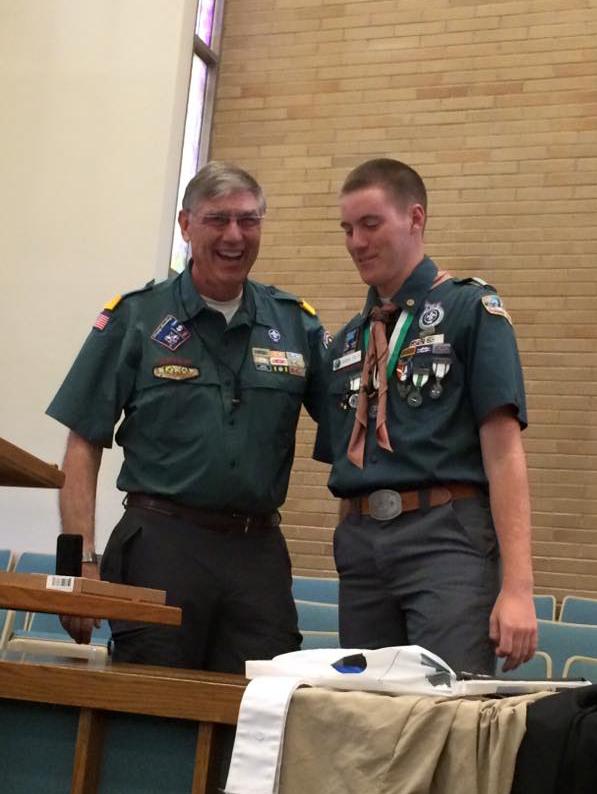
When asked what motivated him to work towards the Summit Award, Jeremy stated that he wanted to embrace every piece of Scouting that he could. He stated that he “felt that with my time as a Scout dwindling, this would be the ultimate culmination of my entire Scouting career.”

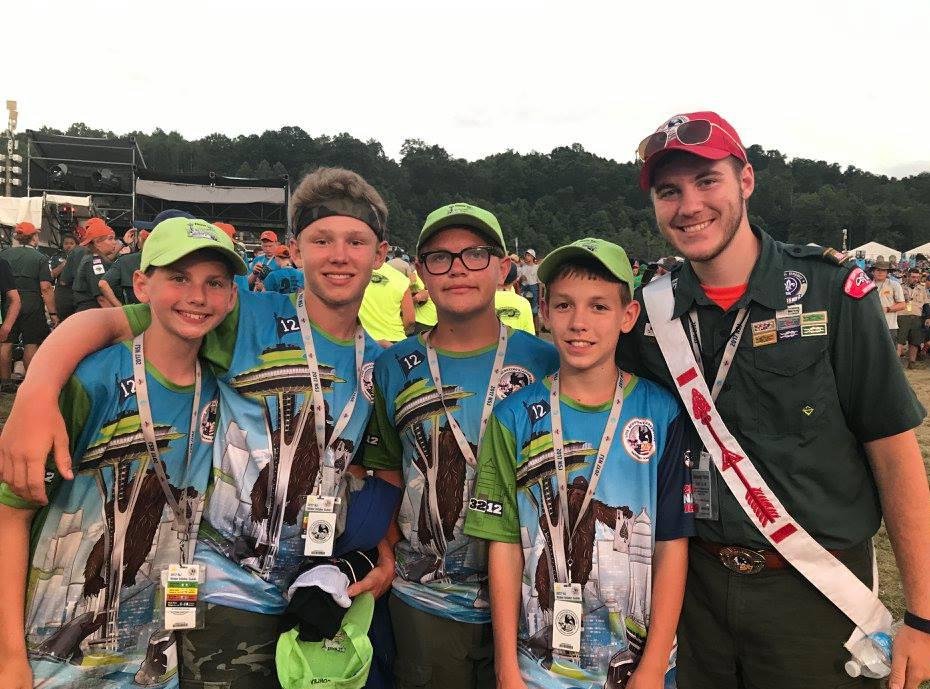


to take the new Venturing courses or nd alternative courses that met the requirements. roughout the whole process, Jeremy wondered if he would be able to complete all of the requirements by the time he aged out of the program. It was the help of Scouters, such as Wendy Kurten, who worked alongside Jeremy to ensure he could complete his goal.
When Jeremy set out to earn Summit, the Venturing Awards system was in a transitional phase. Jeremy was soon approaching his 21st birthday, which added extra di culty to the task. Jeremy recalled that there were few Venturing training courses that ful lled the Summit requirements, so he had to work with the National Venturing Committee to be amongst the rst
For his Summit project, Jeremy worked with his local Audubon Society to plan an event called the Winter Wildlife Field Day, or WWFD for short. is was a free event that allowed families to come to a local refuge to learn about nature and wildlife. e Winter Wildlife Field Day drew in over 200 families in the rst year alone as well as garnering support from several local businesses and organizations.
In the end, Jeremy beat the clock and became the rst Venturer to earn Summit, doing so just before his 21st birthday. Although he was the very rst, this wasn’t his intention. “I didn’t exactly set out to be the rst recipient; for me, the award was released as I nished my term as Regional Vice-President, so I thought it would be a good use of my time to pursue this new award and to see what changes were being brought by the new system.”
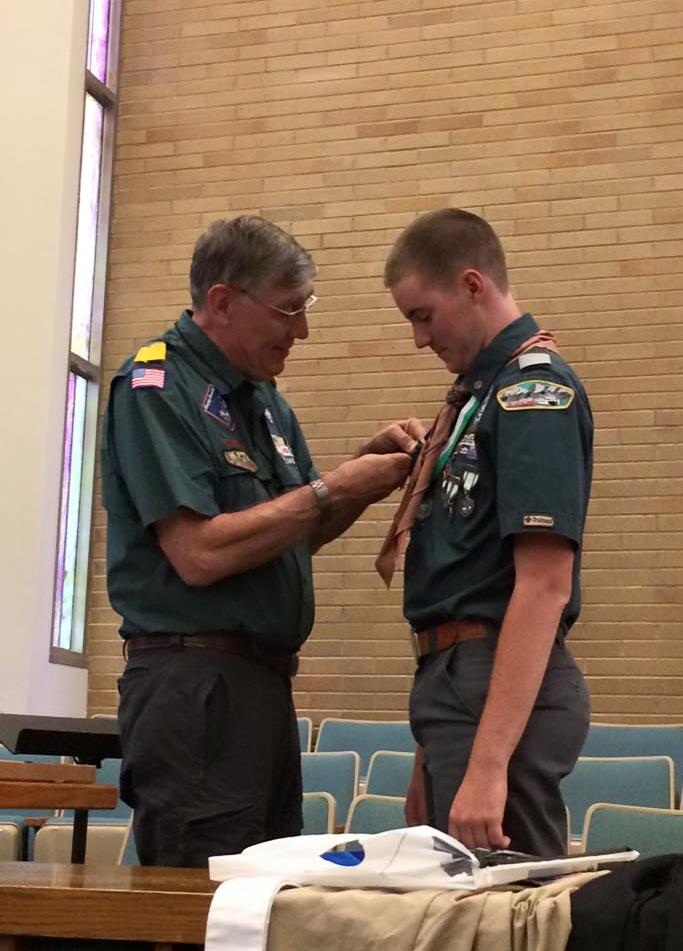
A er completing his Summit Rank, Jeremy continued as the WWFD Chair for the next two years before stepping down and passing the torch to another leader. Jeremy acknowledges that he couldn’t have done it all on his own. “I was lucky to have so much support towards my goals in Venturing that I’d say that I couldn’t have done it without support from so many people.”
Jeremy’s passion for wildlife is still as strong as it was when he was a Venturer. Today, Jeremy works for a company that manages forest lands. He is also still involved in Scouting and serving as a Merit Badge Counselor, though he says he’s not as involved as he would like to be. “In 2019, I did have the pleasure of serving on the World Scout Jamboree Extreme Sports team, helping to coordinate the program for mountain biking, skateboarding, and BMX,” he stated. “I hope to come back to sta at a Jamboree in the future.”
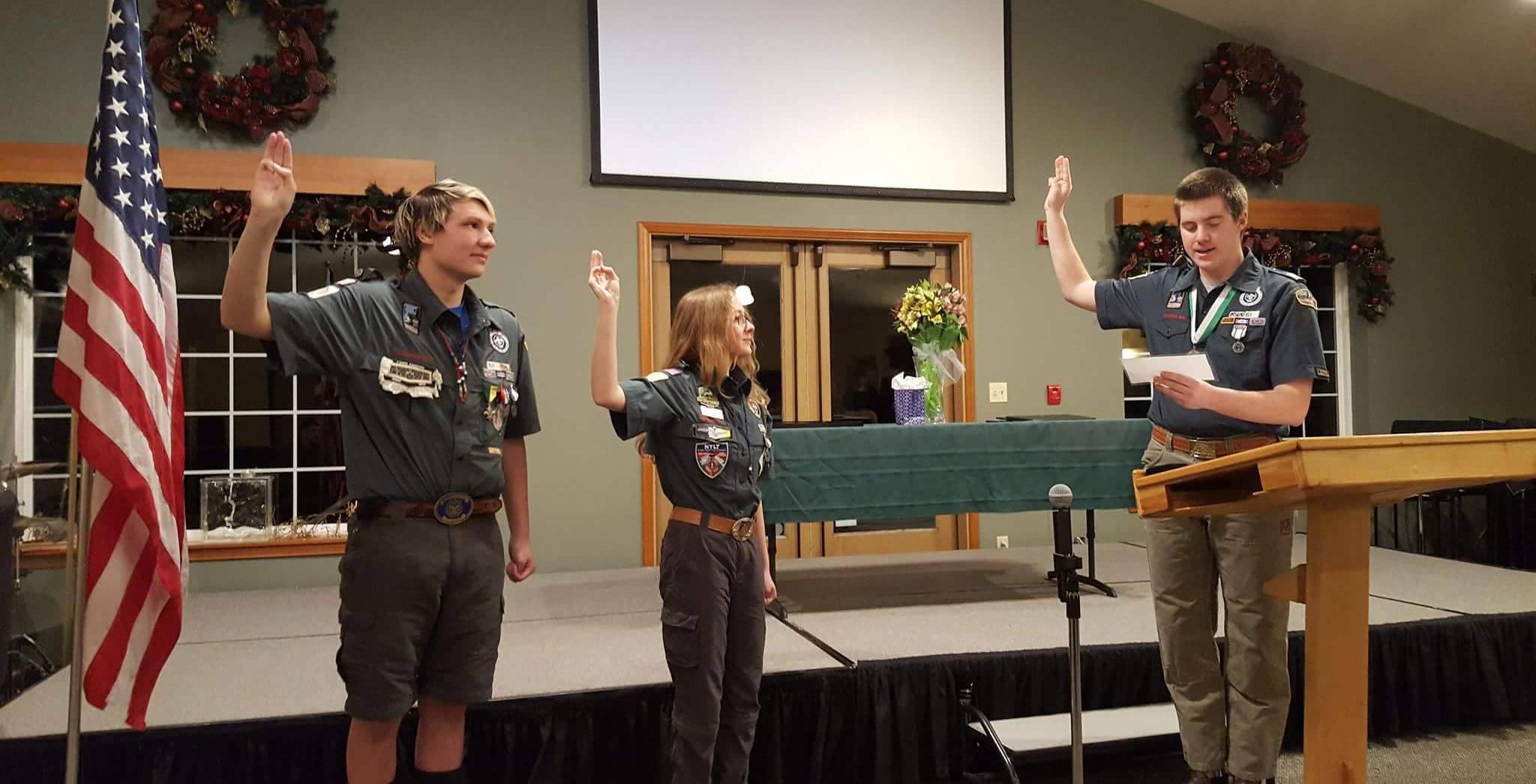
However, for the time being, Jeremy has decided to focus on his career and his family.
Many of the skills he learned in Venturing, including the expectations for the Summit Award, have aided him outside of Scouting. “I felt that the program was a perfect transition to ‘adulthood’ for me. e knowledge and direction I gained have allowed me to be an even better person with an open mind for engaging with those in my professional life.” He states that he would not be the person he is today
January 24 NST 4 Social Hour
January 24 NST 5 Virtual Meeting
January 27-29 Winterfest
February 12 NST 11 Meeting
February 28 NST 4 Social Hour
February 28 NST 5 Virtual Meeting
July 19-23 National Scout Jamboree
JAN 2023 - JUL 2023 VIEW
Facebook: @BSAVenturing Instagram: @VenturingBSA
Twitter: @VenturingBSA